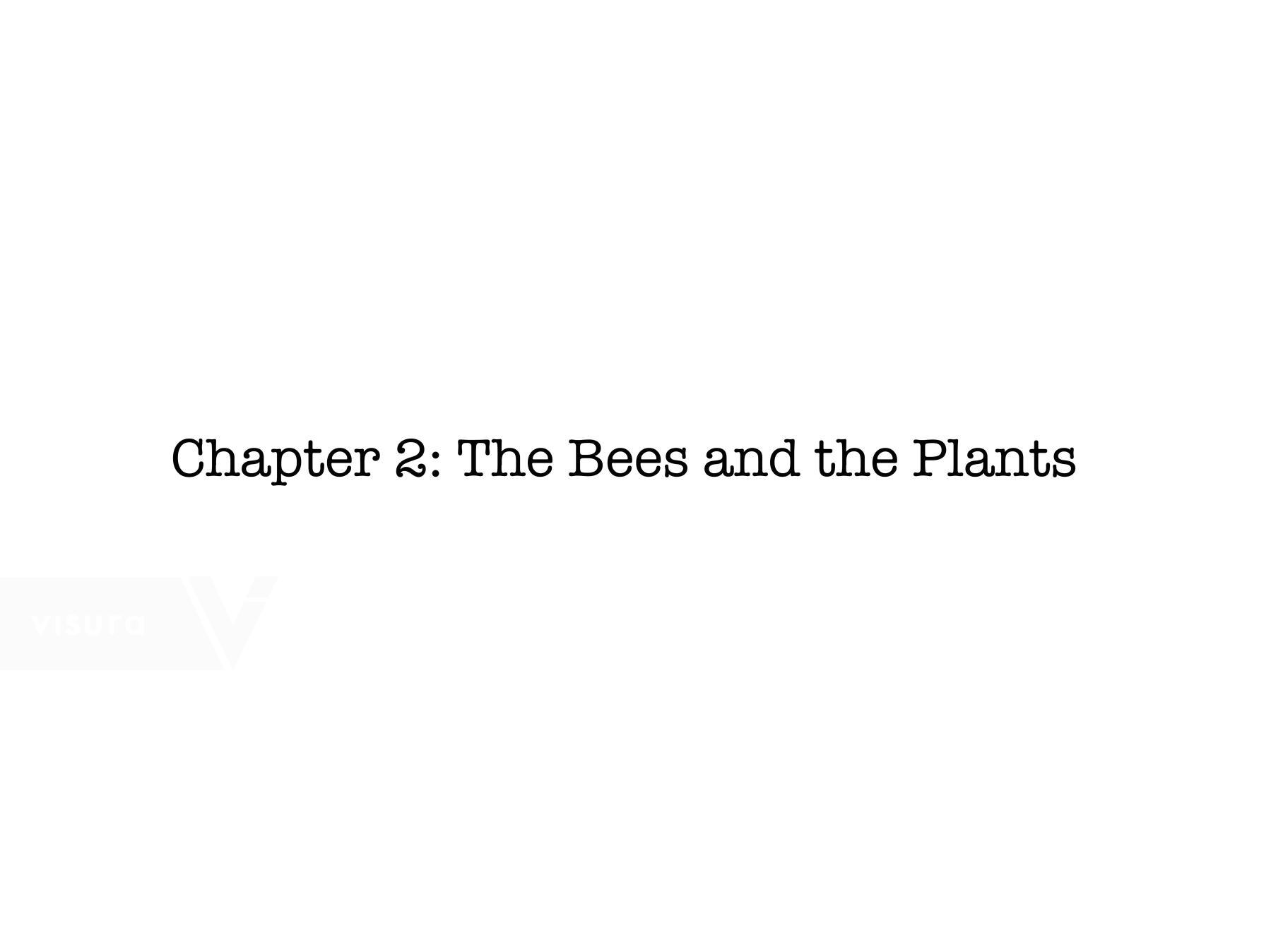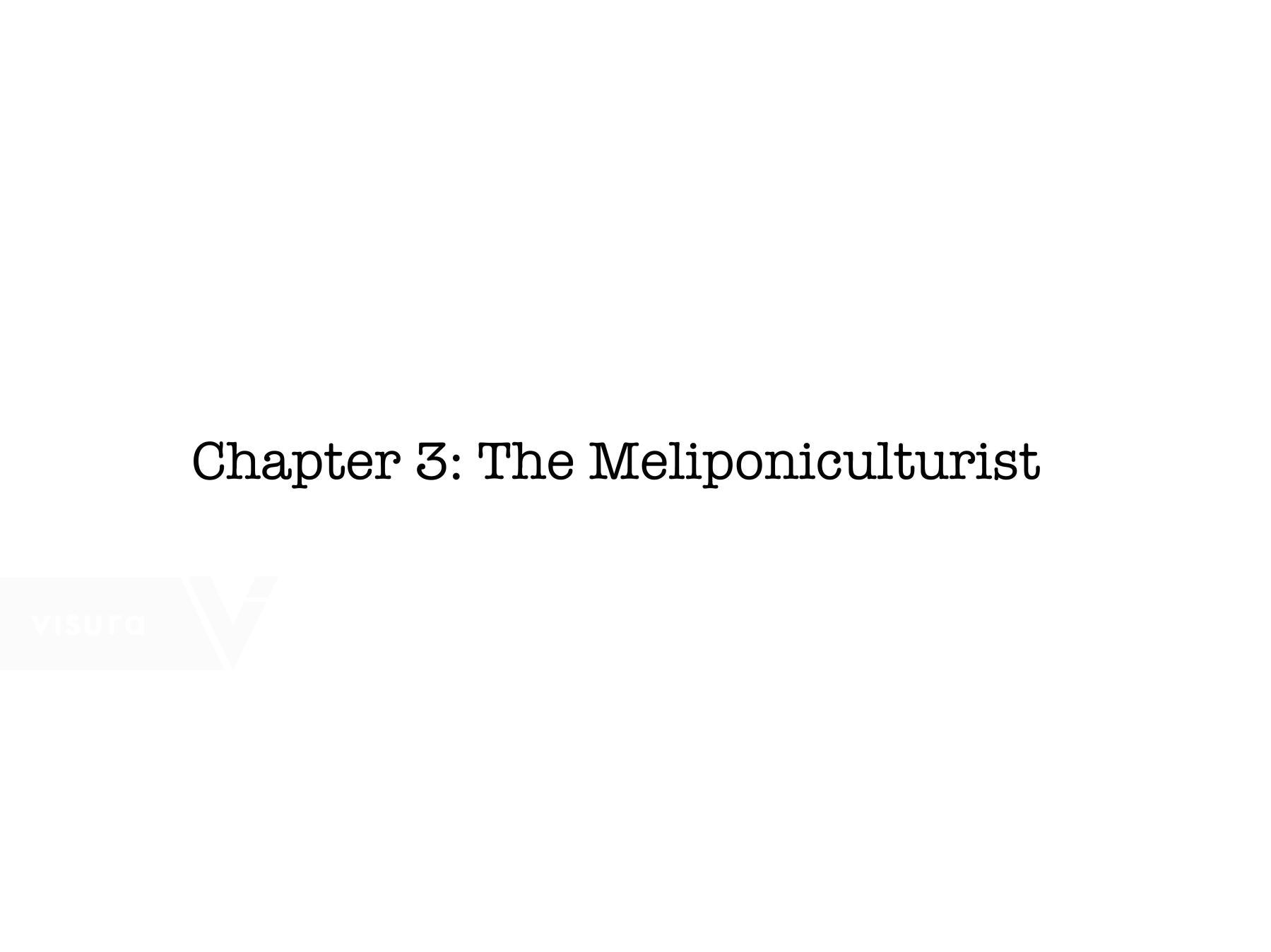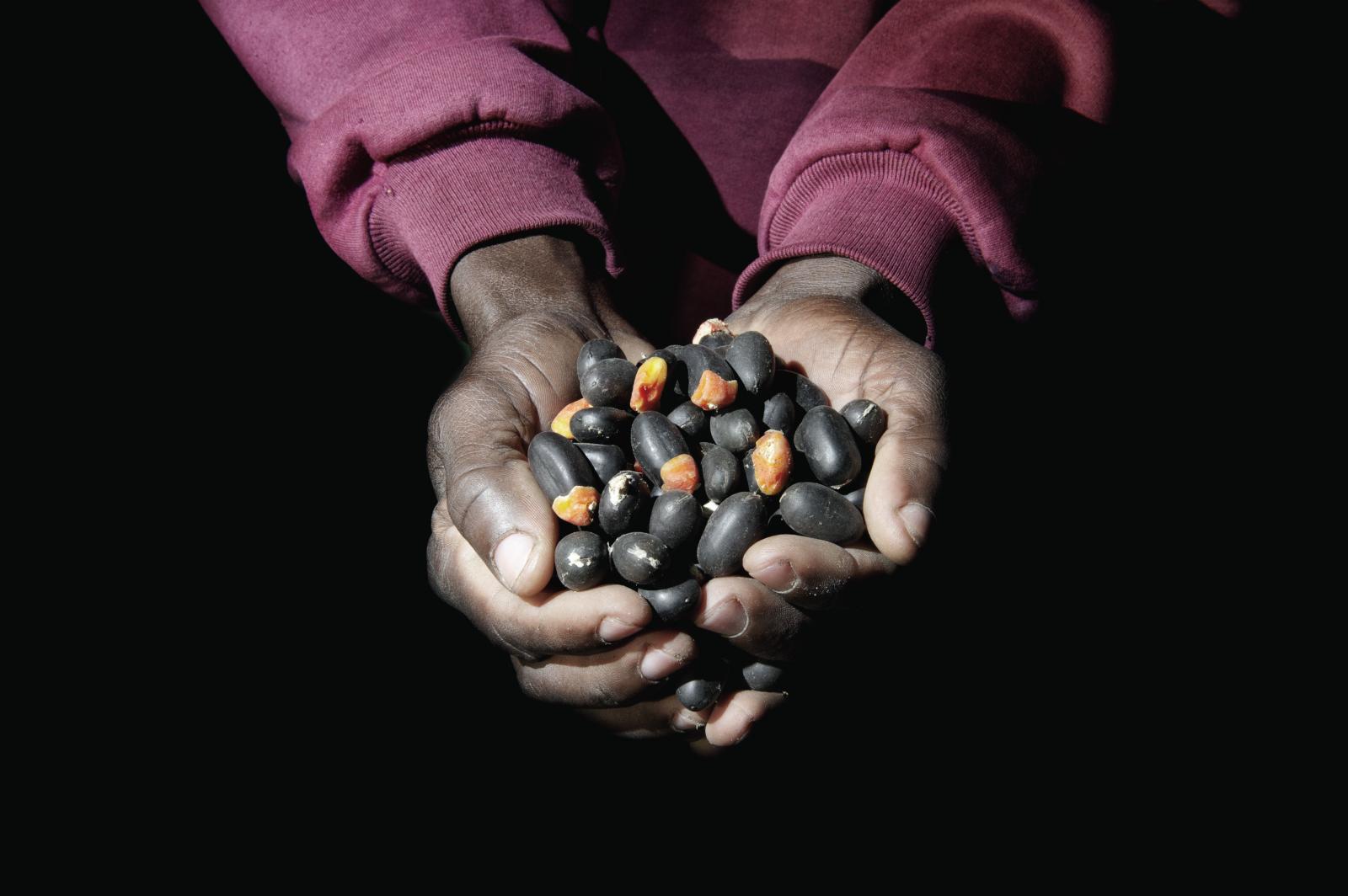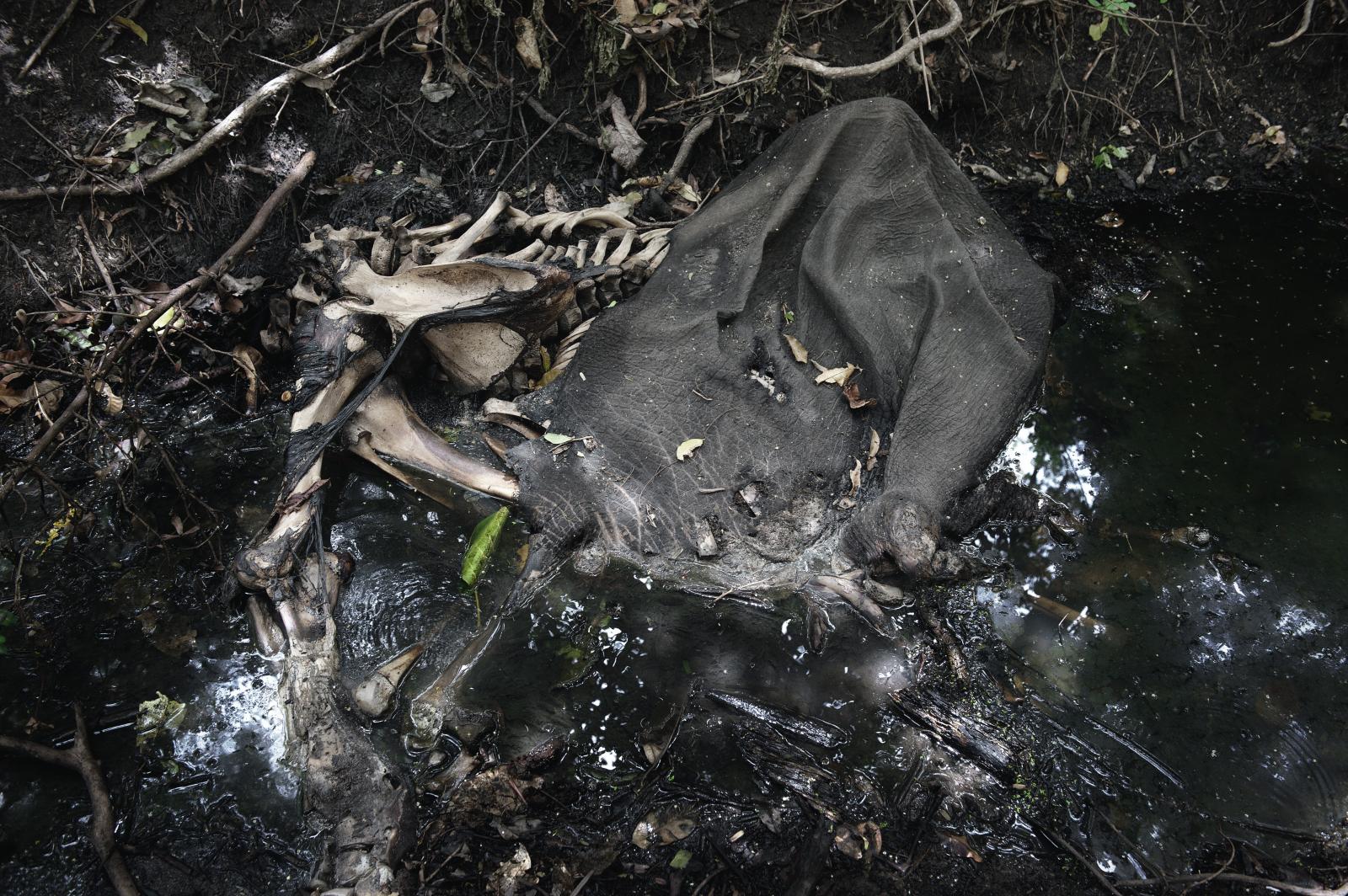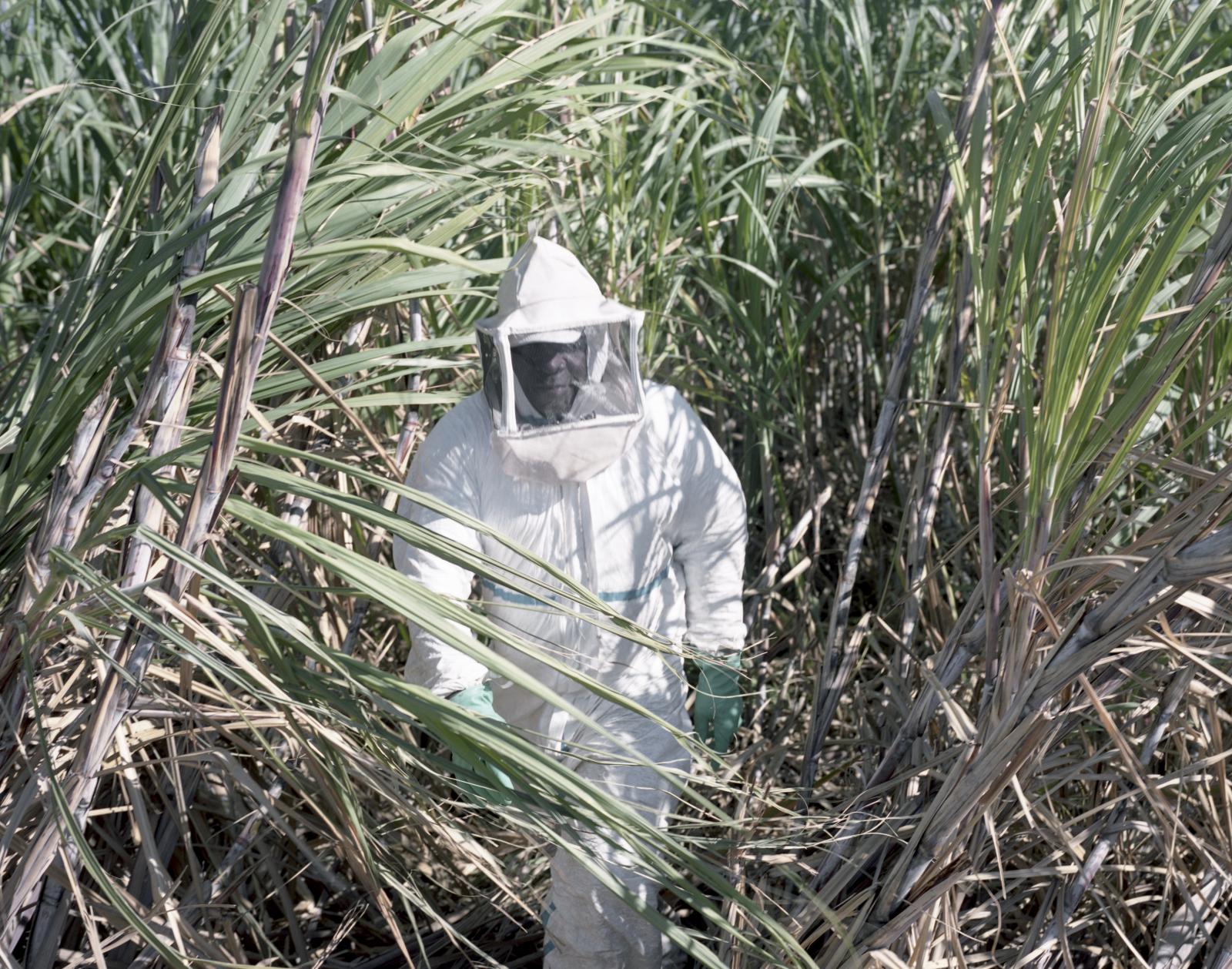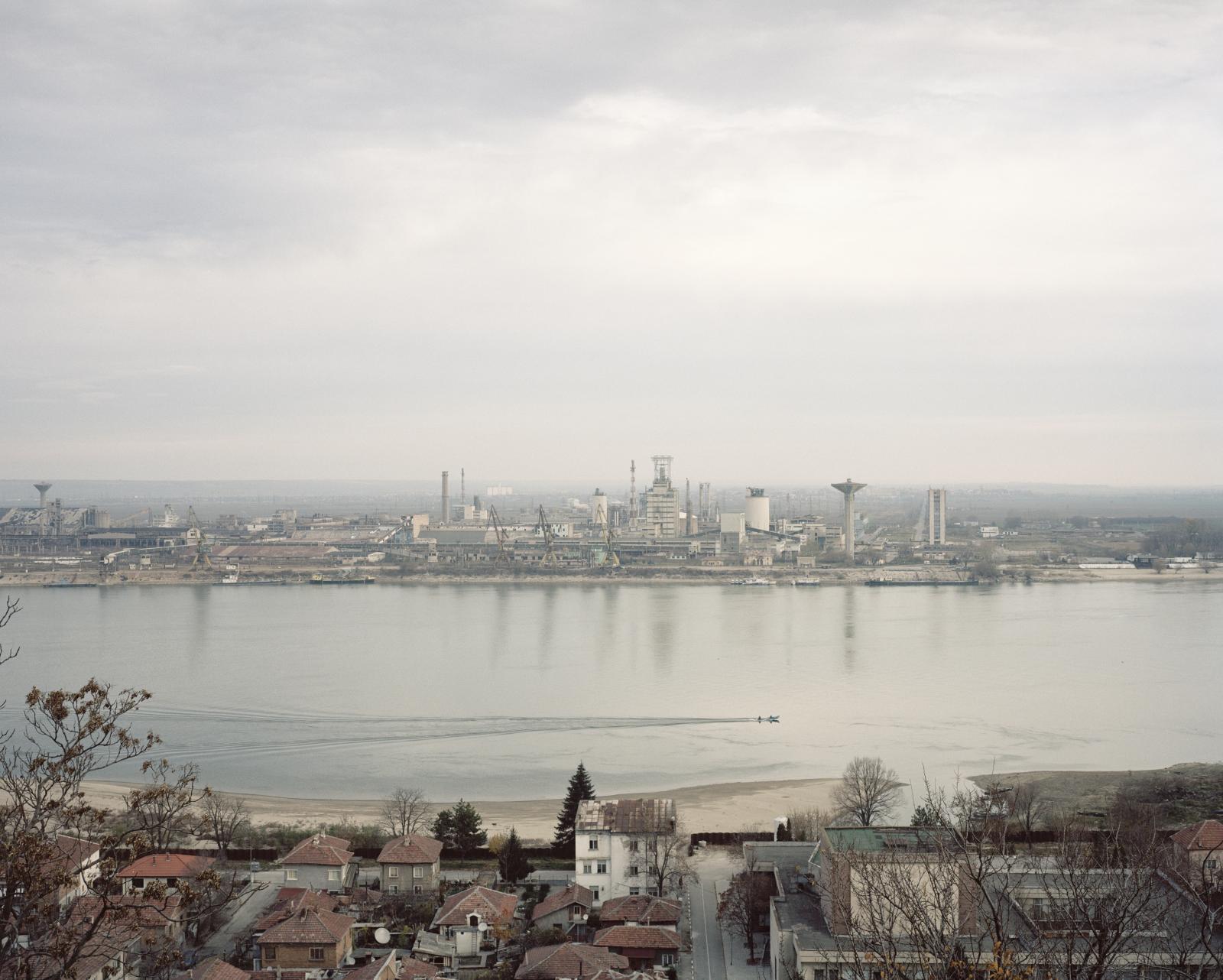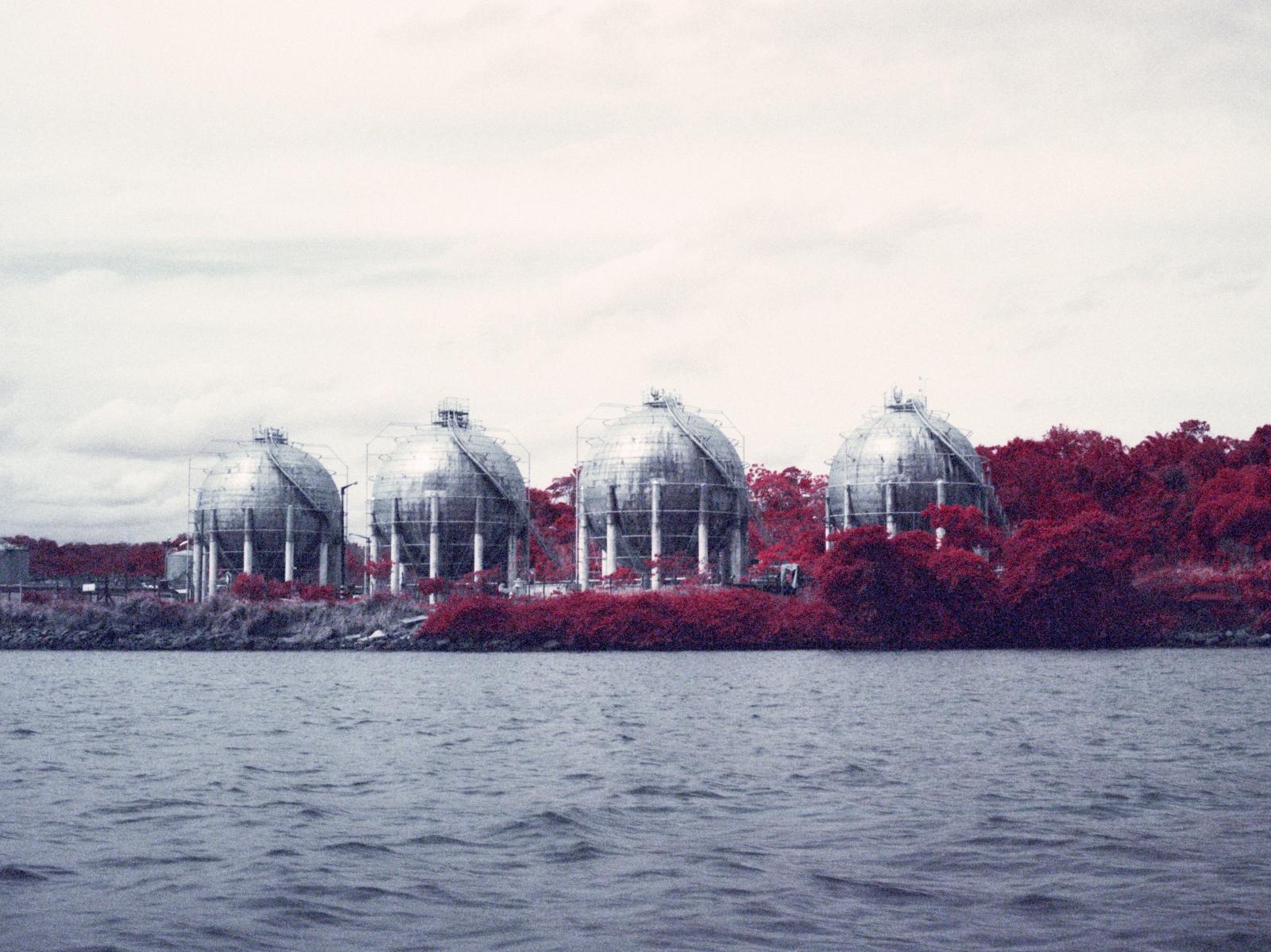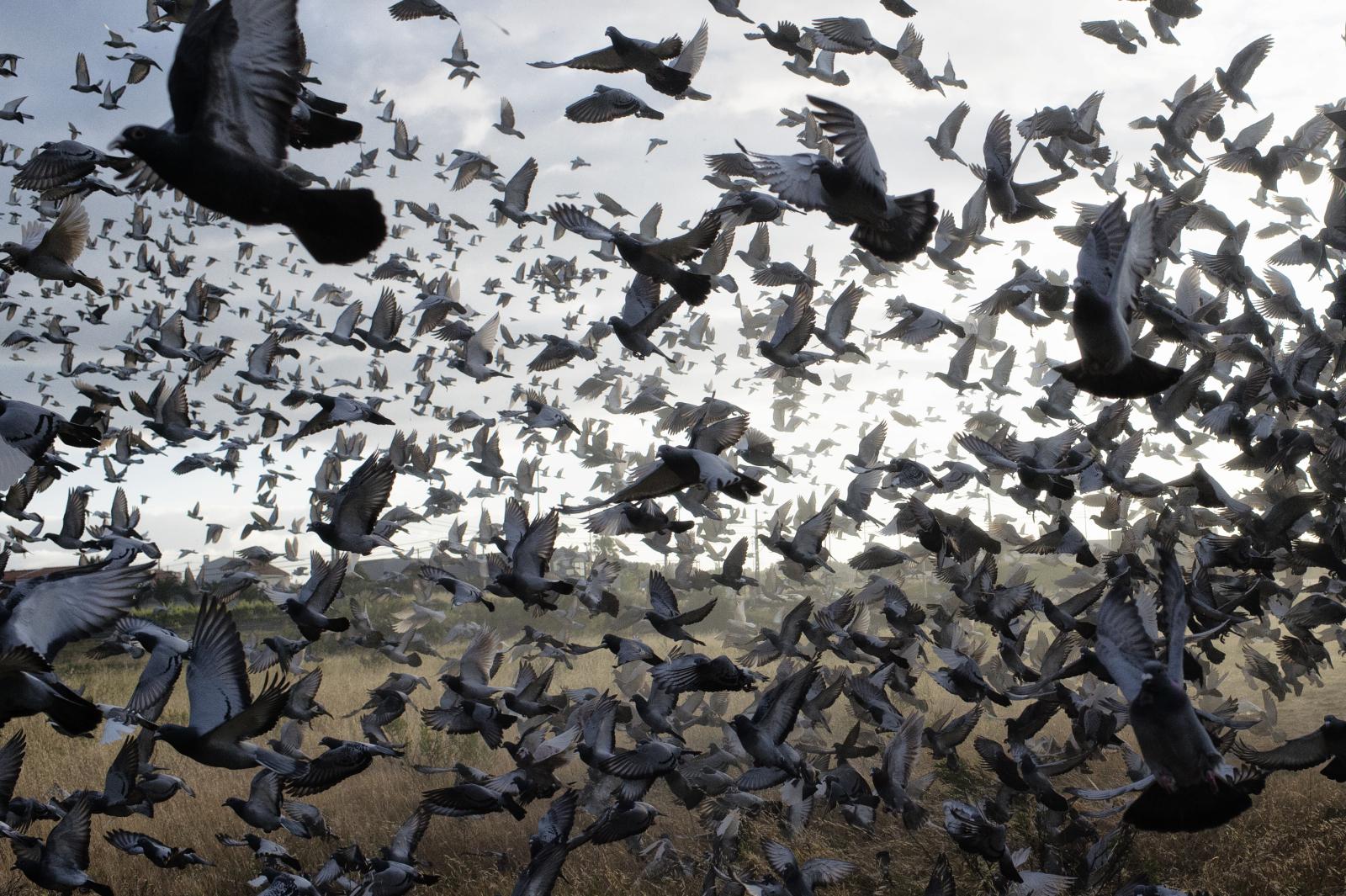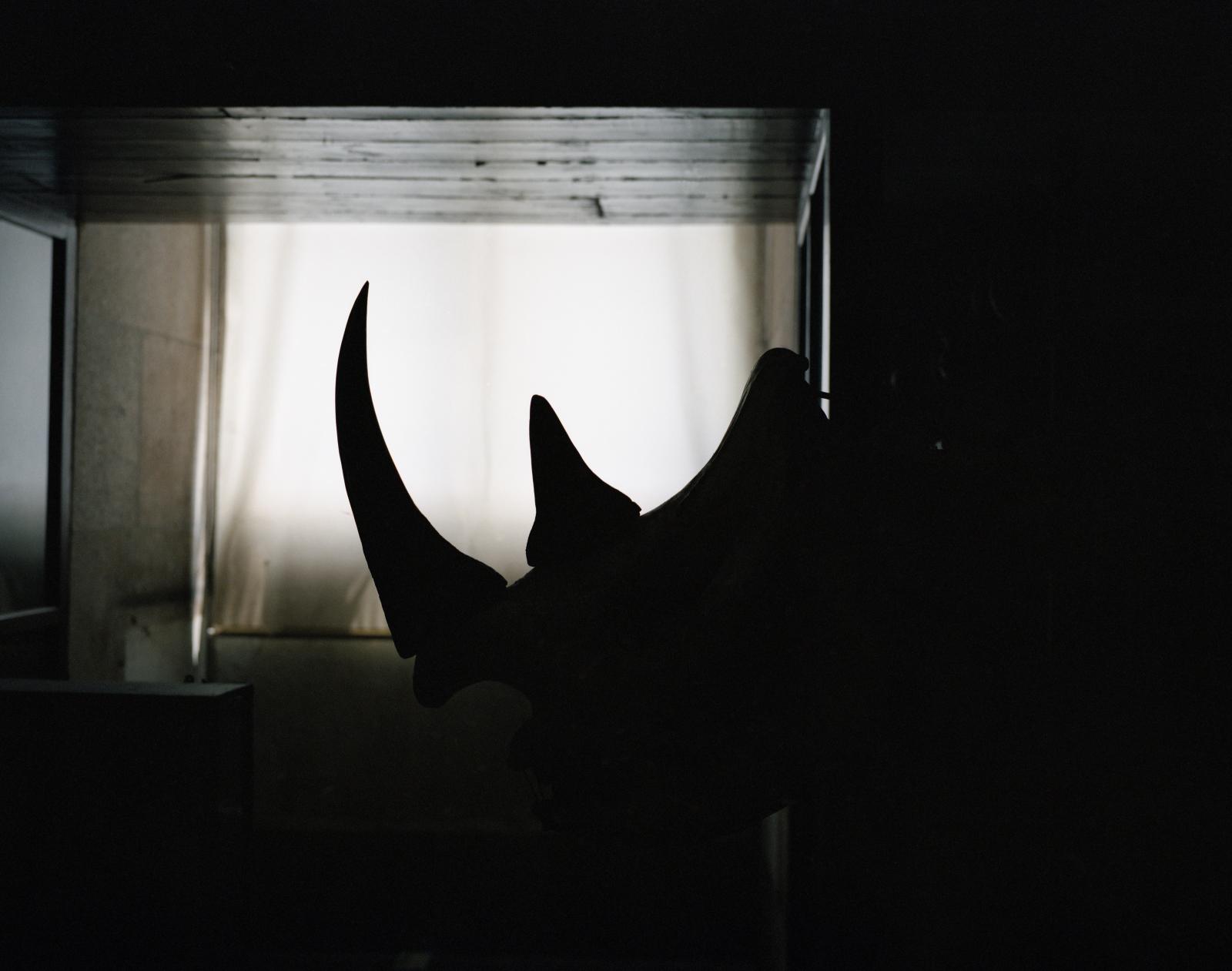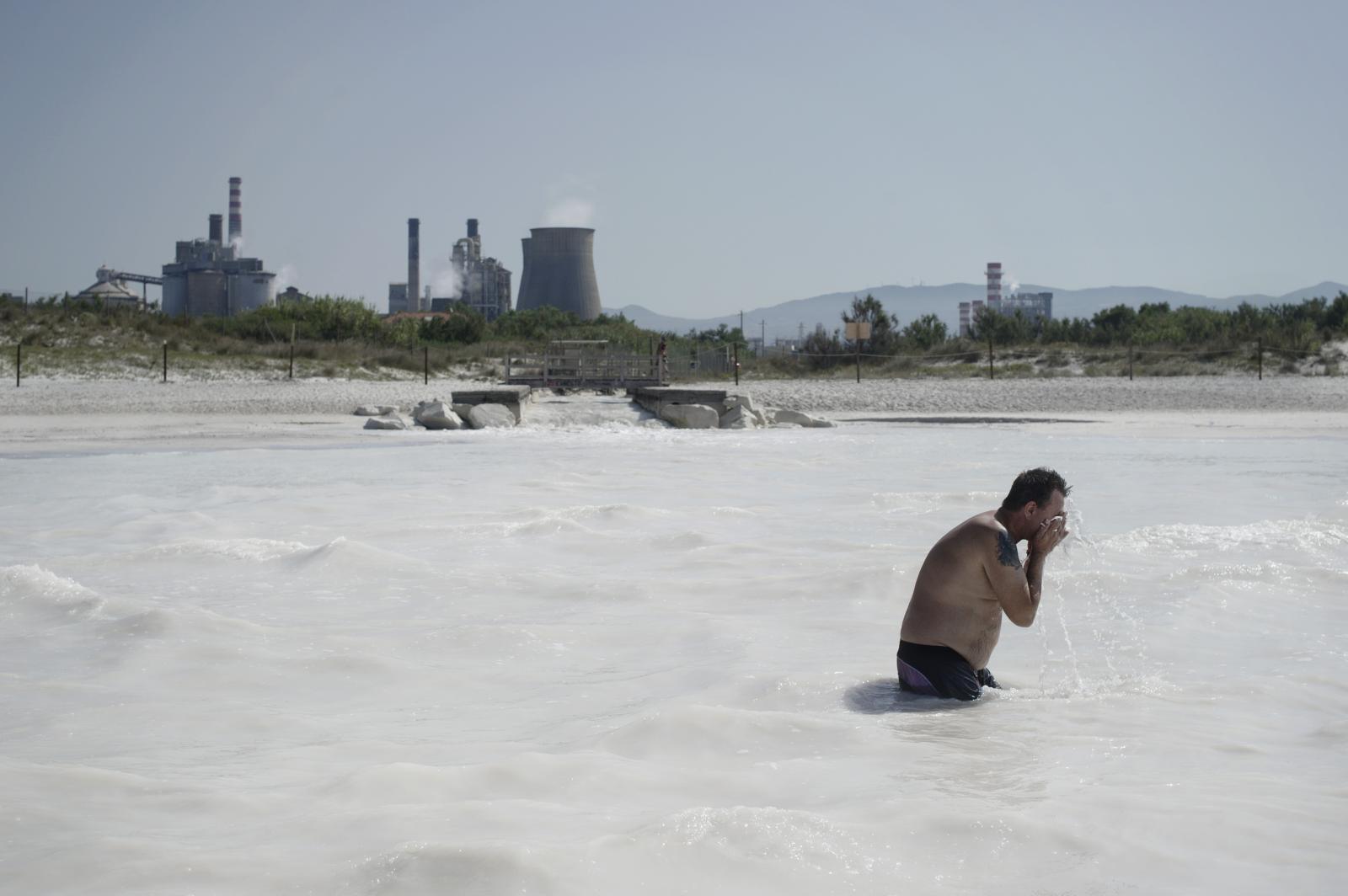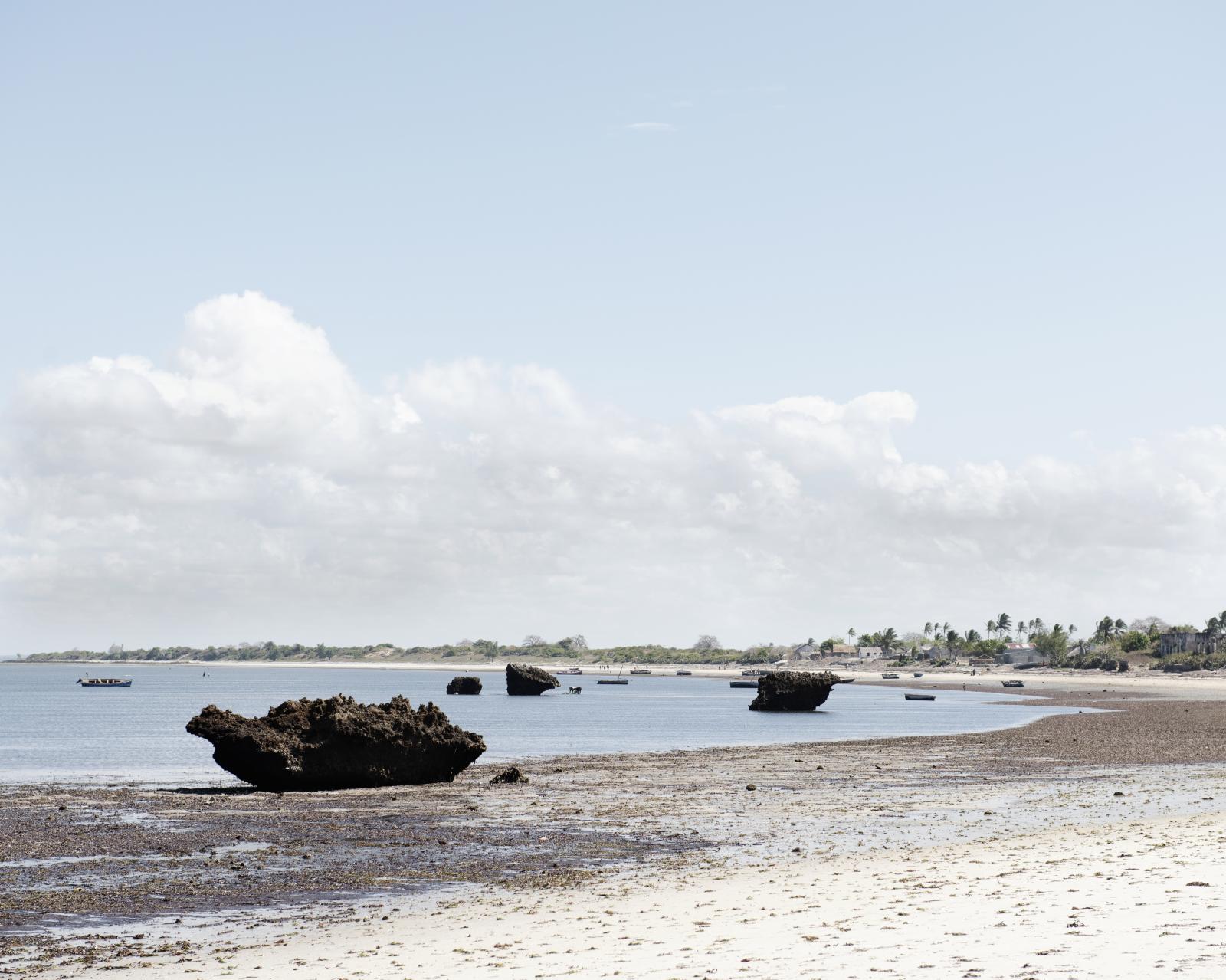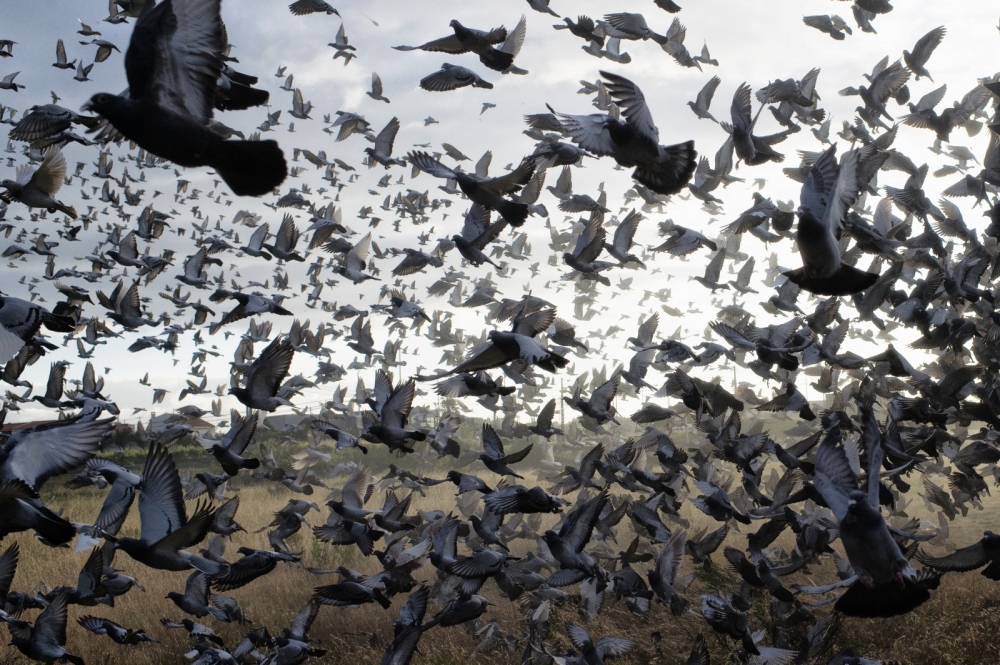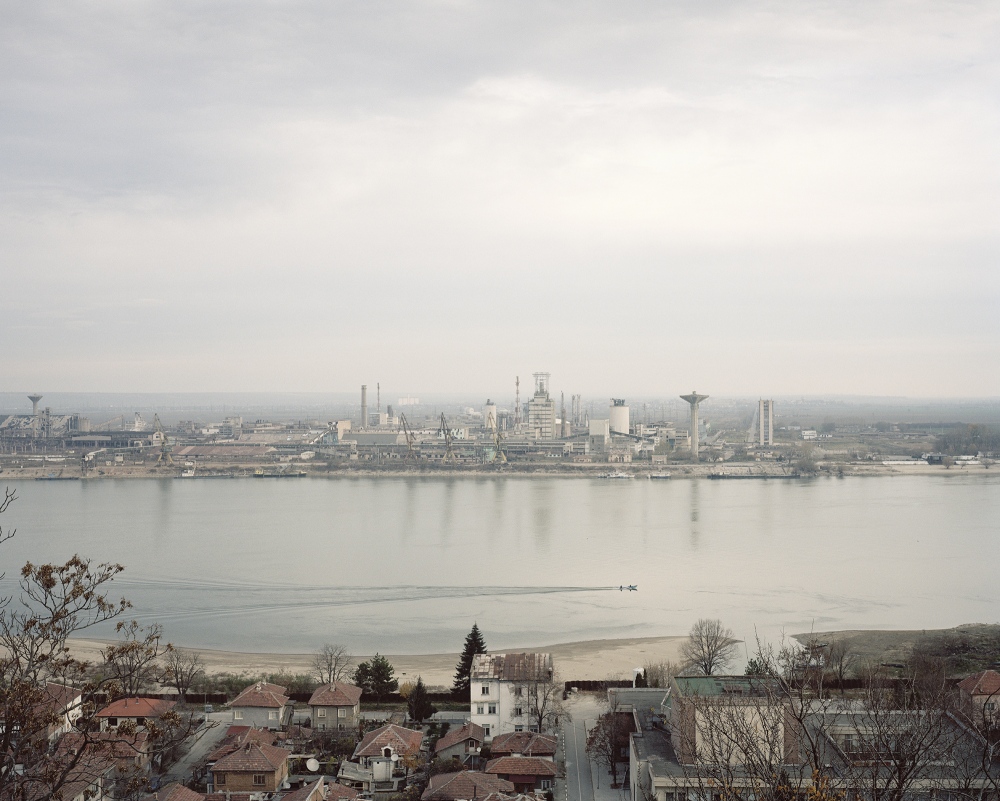
Boa Vista Da Acará, Brazil. A view of the Guamá River, where the community breeding stingless bees is based. Acará Brazil
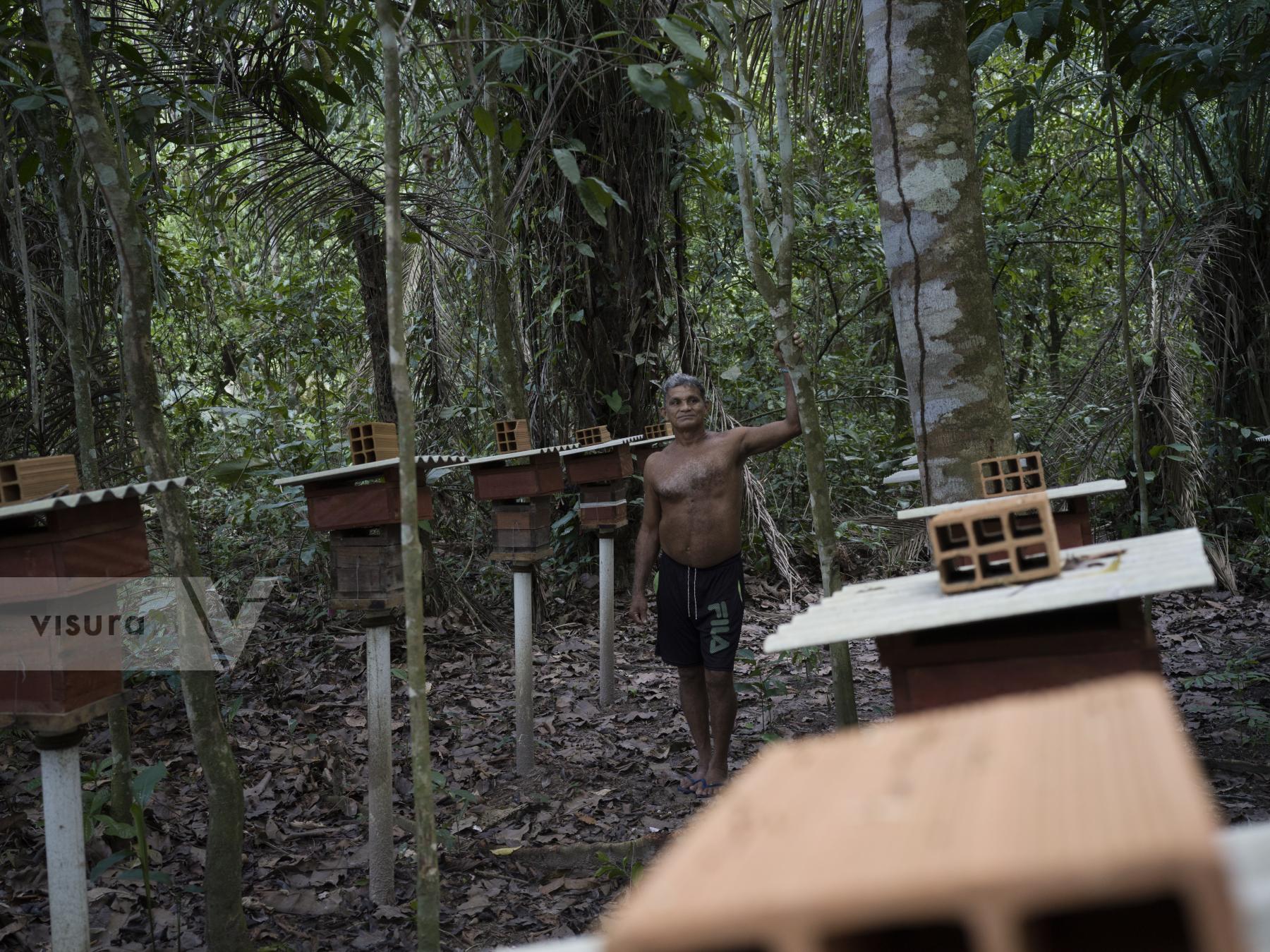
A meliponiculturist of the community of Boa Vista do Acará checking his meliponary. The members of the Community are small farmers with lower income, the honey production is a side income respect the main activities. The stingless bee’s hives request a low management and maintenance and the bees are easy to handle since they don’t sting. The native Brazilian stingless bees are fundamental for maintenance of the ecosystem; especially today, that with climate change and deforestation the Amazon Forest is at risk the stingless bees act as protector of the forest allowing new trees to grow and replace the ones that disappeared because of the human hand. The bees colonies aren’t captured from the wild but are multiply from a Melliponiculture breeding site managed by the NGO. Acará Brazil

A view of the structure of a Uruçu-amarela hive. Despite native Brazilian bees produce a low amount of honey (around 5 kg per year), it is considered healthier due to its lower sugar content, higher acidity, and greater humidity compared to Apis honey - has become highly coveted, reaching prices ranging from R$80 to R$300 per liter. The demand for this honey is driven by its superior quality, attributed to native bee hives, which generally gather fewer individuals and produce lower quantities compared to the more common European honey bee colonies.
Meliponiculture is economically, environmentally, and socially important in the various niches and regions where bees occur, as it does not require intensive care or high investment in the construction of a meliponary. The activity can even be carried out by beekeepers of all ages, including children and the elderly. In addition, stingless bees can be kept in residential areas, as many species do not present any risk of accidents. Acará Brazil
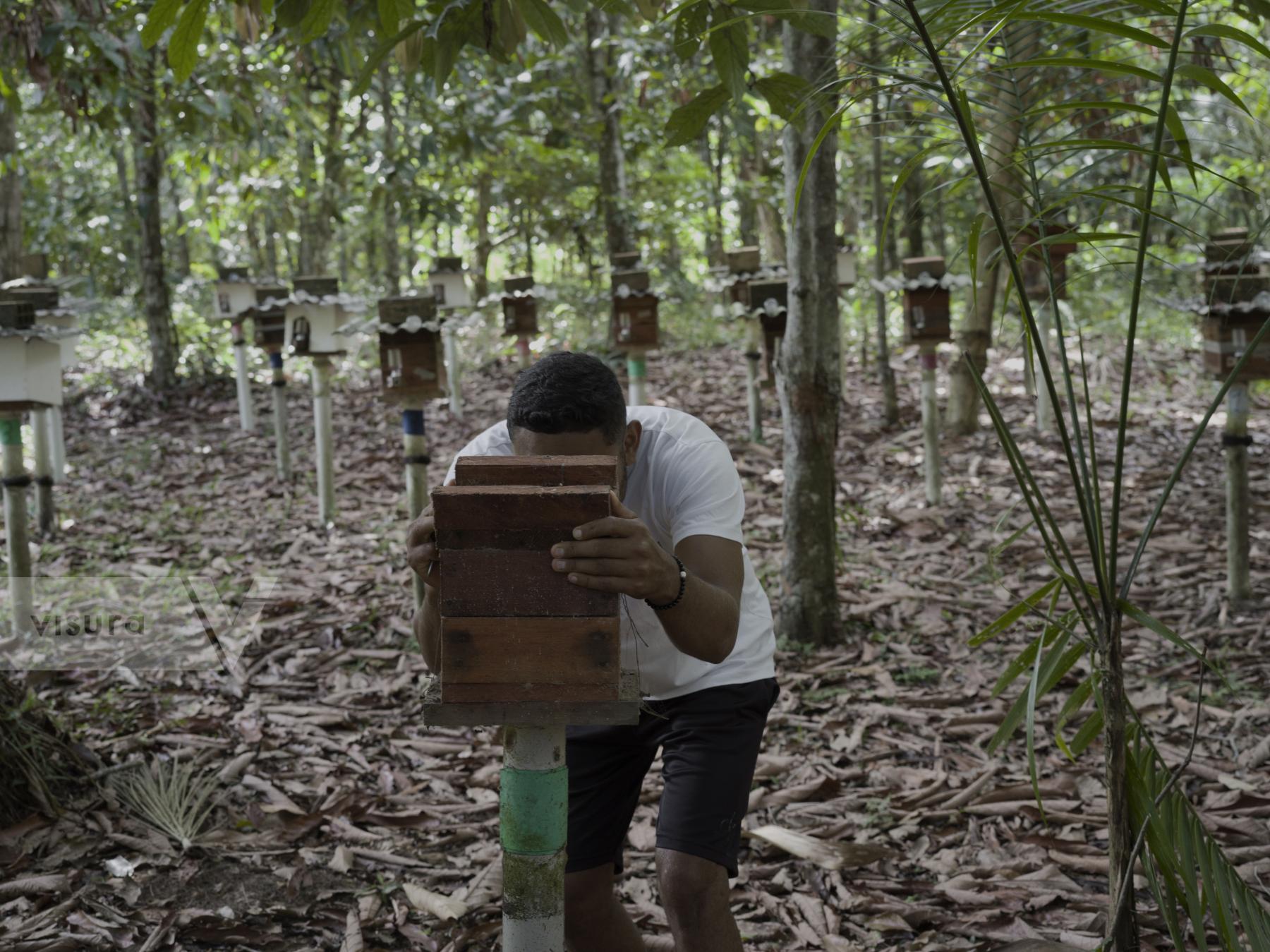
A member of the Peabiru NGO checks the reproductive meliponary which is foundamental to avoid the capture of wild bees colonies. Only in this way it is possible
to increase the population of stingless bees present in the ecosystem.A Meliponiculturist show his hand where some Uruçu-amare. Acará Brazil
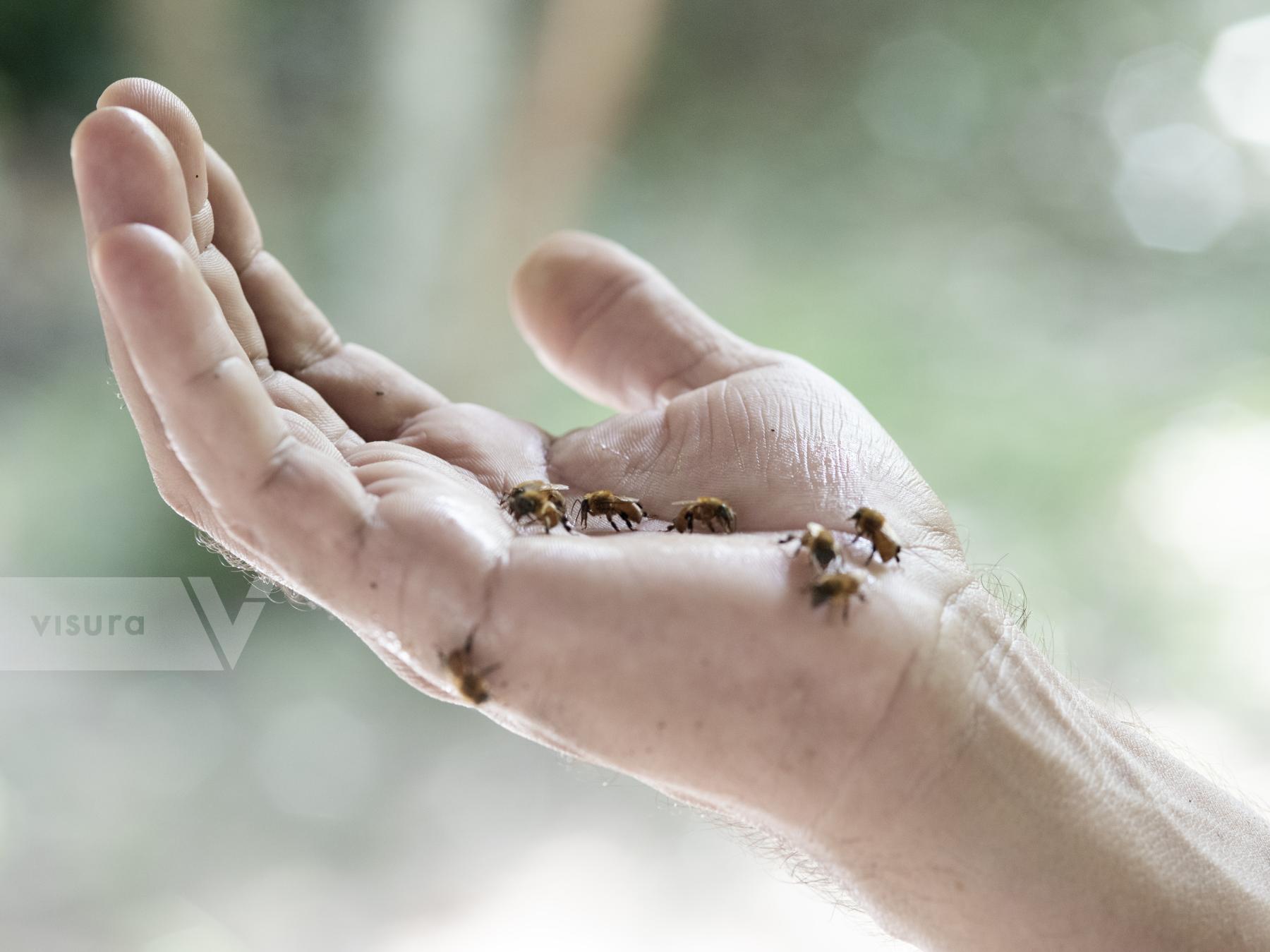
A Meliponiculturist show his hand where some Uruçu-amarelas have been attracted by some honey. Despite native Brazilian bees produce a low amount of honey (around 5 kg per year), it is considered healthier due to its lower sugar content, higher acidity, and greater humidity compared to Apis honey - has become highly coveted, reaching prices ranging from R$80 to R$300 per liter. The demand for this honey is driven by its superior quality, attributed to native bee hives, which generally gather fewer individuals and produce lower quantities compared to the more common European honey bee colonies. Meliponiculture is economically, environmentally, and socially important in the various niches and regions where bees occur, as it does not require intensive care or high investment in the construction of a meliponary. The activity can even be carried out by beekeepers of all ages, including children and the elderly. In addition, stingless bees can be kept in residential areas, as many species do not present any risk of accidents. Acará Brazil

A view of a local açai shop. The local farmers have small açai cultivation that are their main income. The açai is sold and consumed locally. The honey production is a side income respect the main activities. The stingless bee’s hives request a low management and maintenance and the bees are easy to handle since they don’t sting. The native Brazilian stingless bees are fundamental for maintenance of the ecosystem; especially today, that with climate change and deforestation the Amazon Forest is at risk the stingless bees act as protector of the forest allowing new trees to grow and replace the ones that disappeared because of the human hand. The bees colonies aren’t captured from the wild but are multiply from a Melliponiculture breeding site managed by the NGO. Acará Brazil
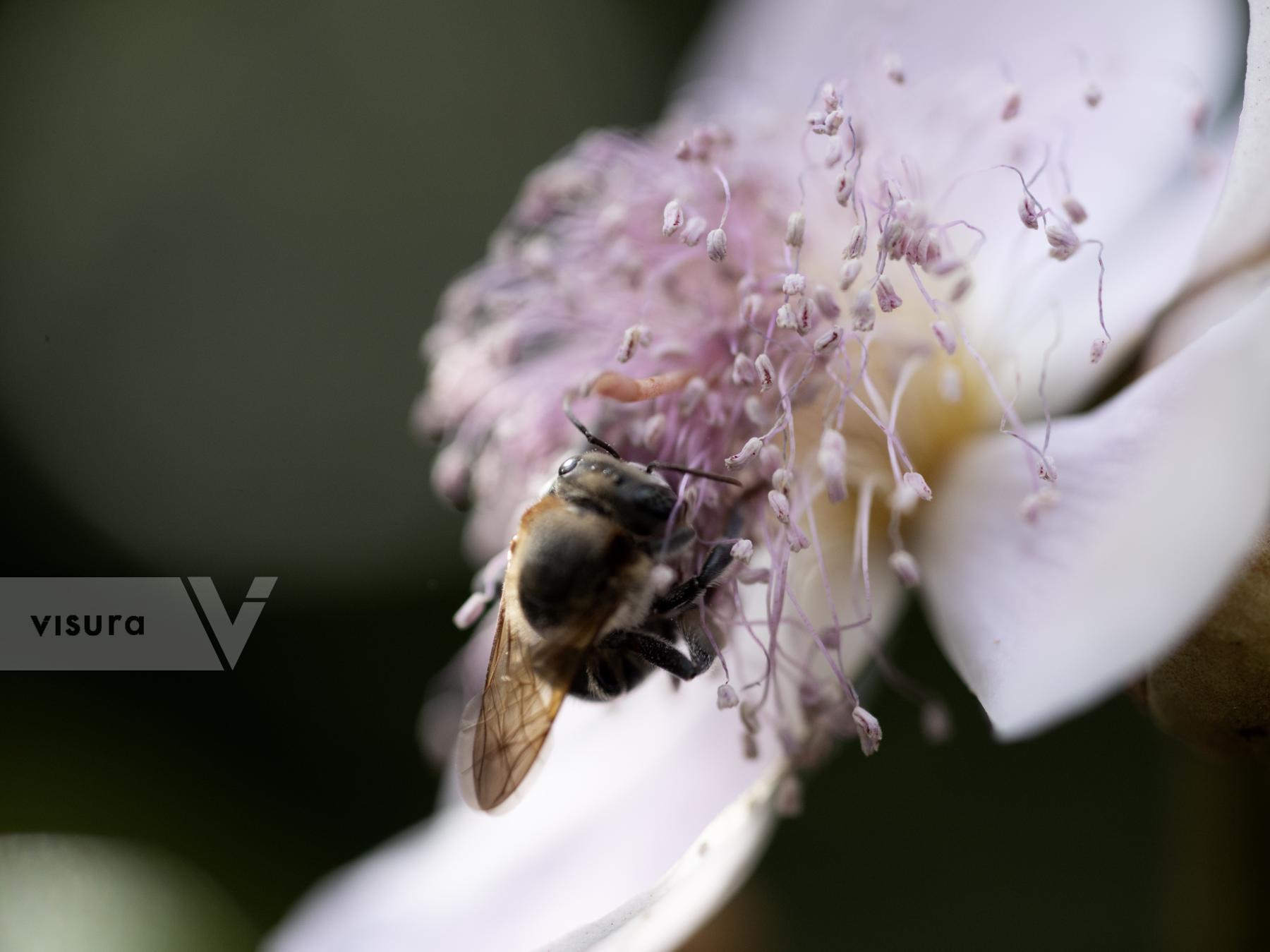
An Uruçu-amarela collect the pollen from Urucum tree flowers. The native Brazilian stingless bees are fundamental for maintenance of the ecosystem; especially today, that with climate change and deforestation the Amazon Forest is at risk the stingless bees act as protector of the forest allowing new trees to grow and replace the ones that disappeared because of the human hand. Acará Brazil

A view of the NGO meliponary used to duplicate the stingless bees colonies. A reproduction meliponary is foundamental to avaid the capture of wild colonies. Only in this way it is possible to increase the number of stingless bees present in the ecosystem. Acará Brazil
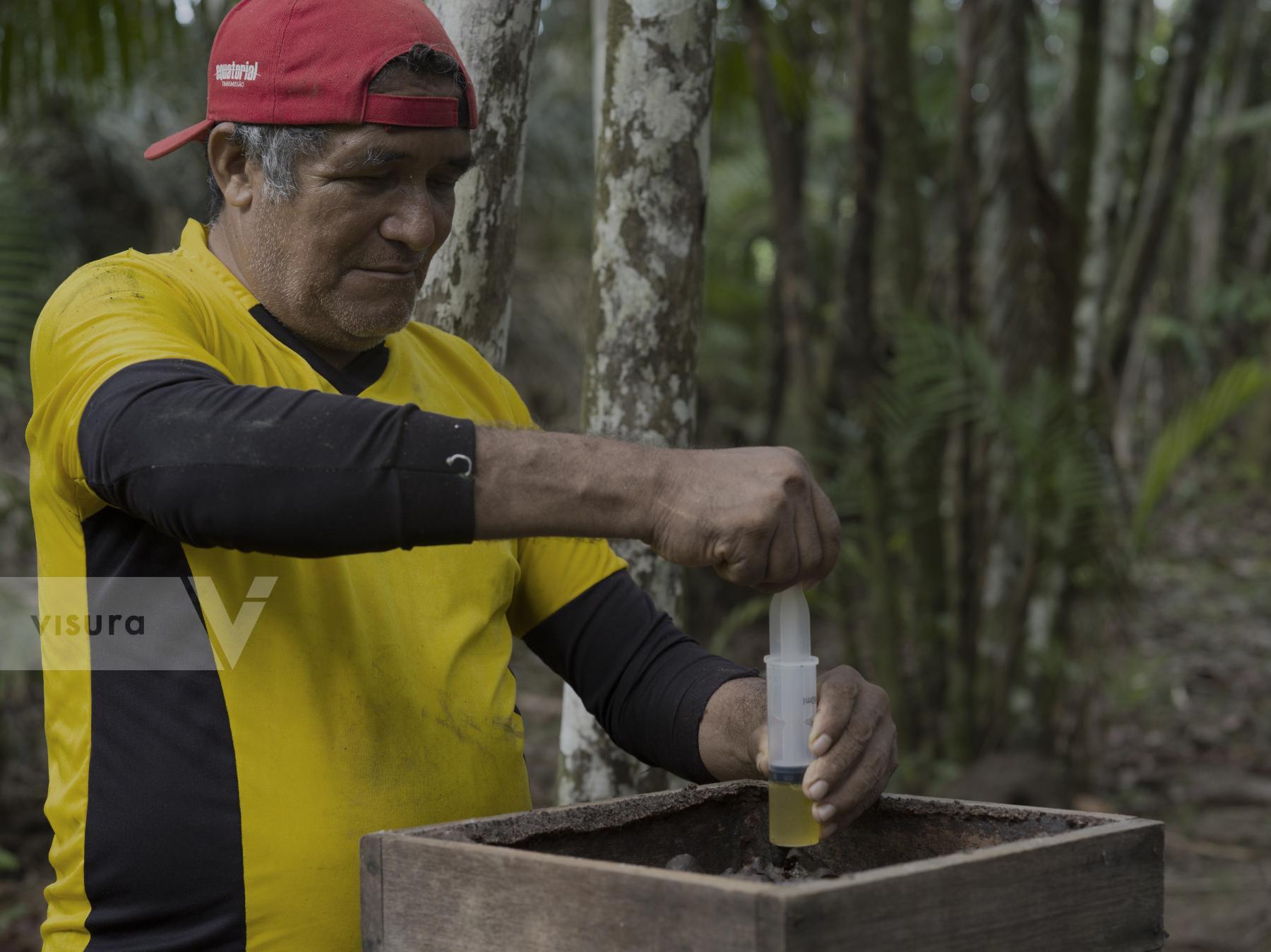
A meliponiculturist extracting the honey from the Uruçu-cinzenta hives. Despite native Brazilian bees produce a low amount of honey (around 5 kg per year), it is considered healthier due to its lower sugar content, higher acidity, and greater humidity compared to Apis honey - has become highly coveted, reaching prices ranging from R$80 to R$300 per liter. The demand for this honey is driven by its superior quality, attributed to native bee hives, which generally gather fewer individuals and produce lower quantities compared to the more common European honey bee colonies.
Meliponiculture is economically, environmentally, and socially important in the various niches and regions where bees occur, as it does not require intensive care or high investment in the construction of a meliponary. The activity can even be carried out by beekeepers of all ages, including children and the elderly. In addition, stingless bees can be kept in residential areas, as many species do not present any risk of accidents. Acará Brazil

Boa Vista Da Acará, Brazil. A view of the Guamá River, where the community breeding stingless bees is based. Acará Brazil
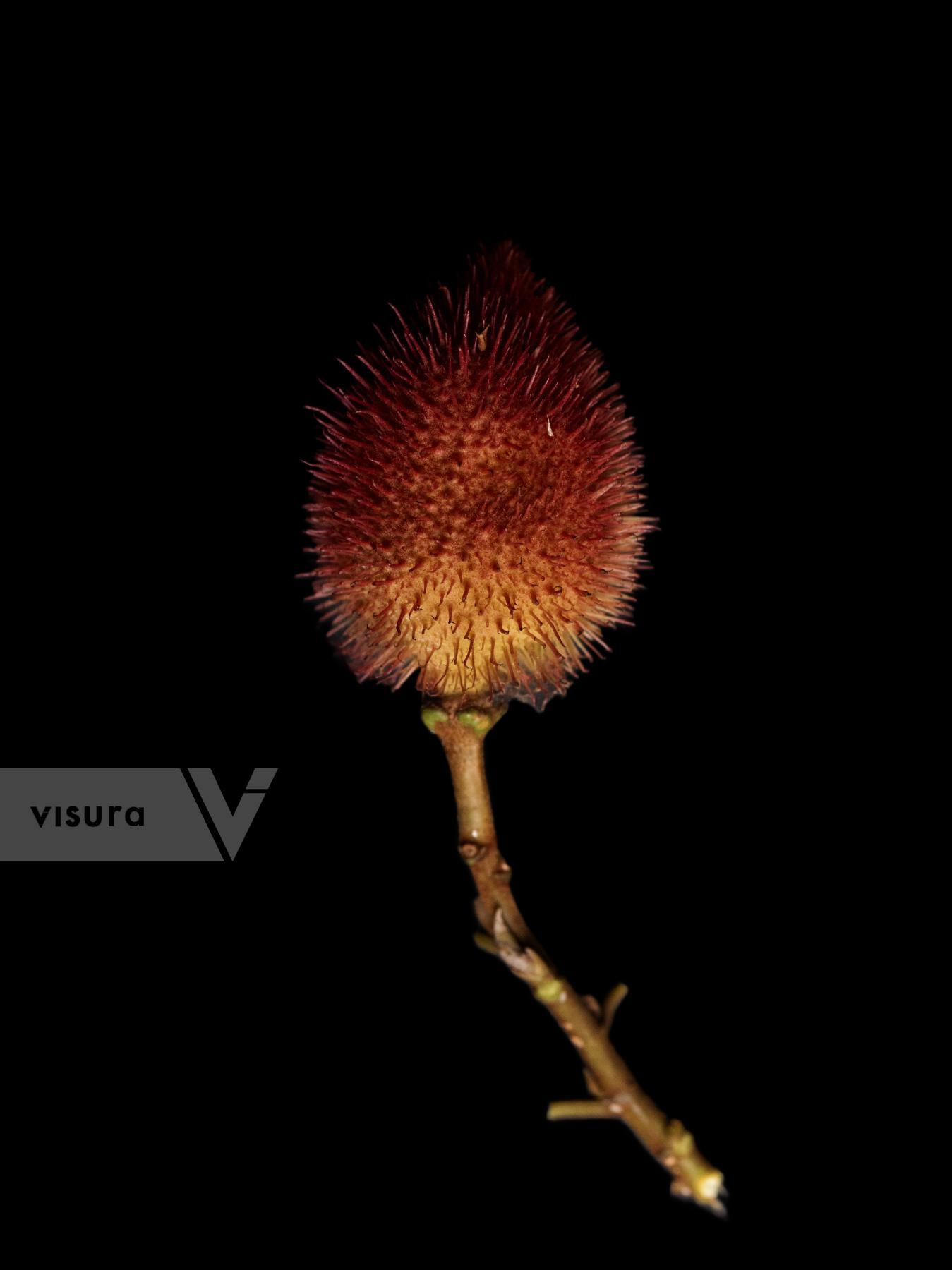
A Still life images of the Urucu (Bixa Orellana) fruit. The indigenous people use the fruit for culinary, and painting. Acará Brazil

A macro image of the hive of a colony of stingless bees. in this image the specie is the Uruçu-cinzenta (Melipona fasciculata). Acará Brazil
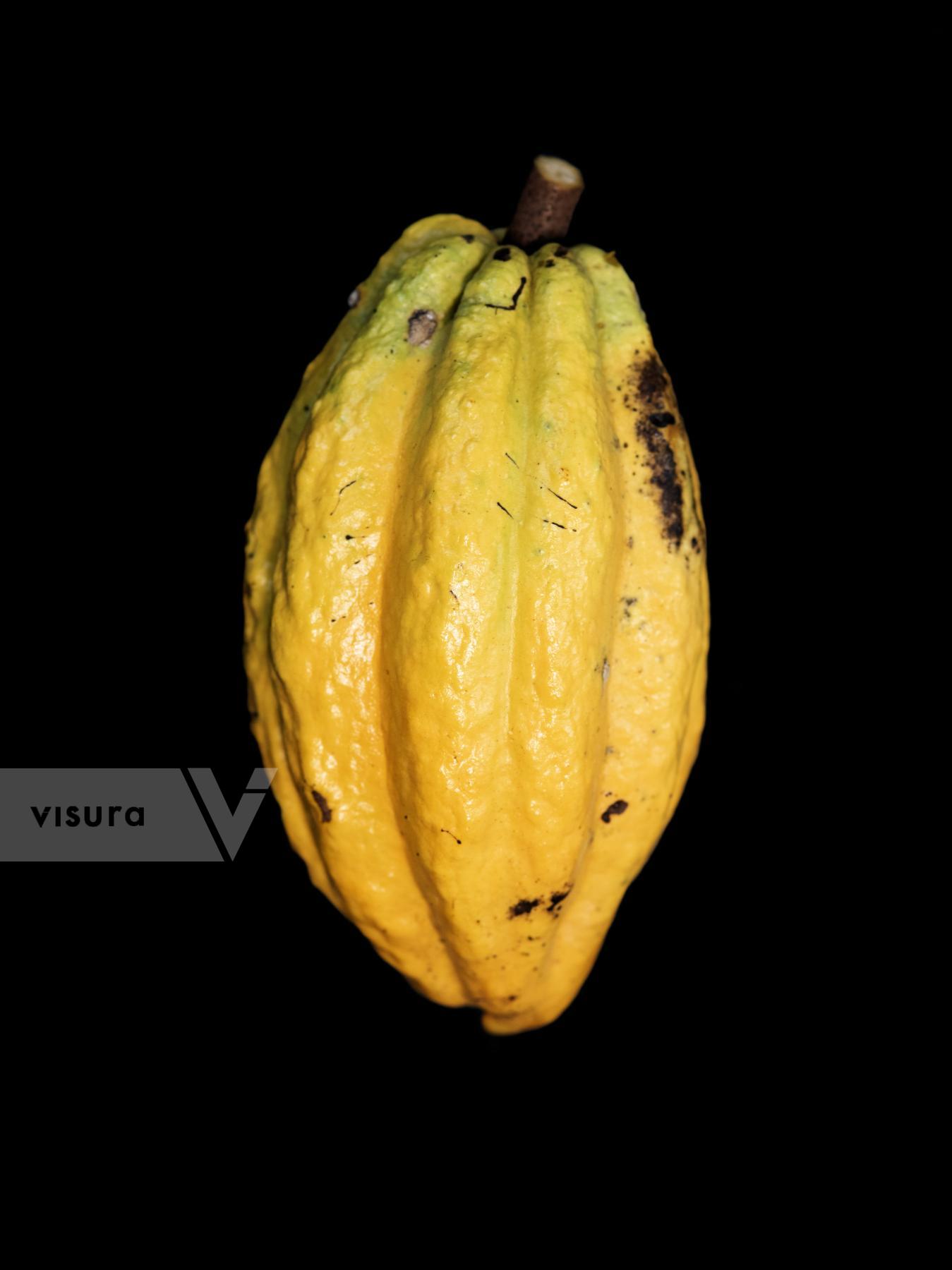
A Still life images of the Cacau (Theobroma cacao) fruit. Acará Brazil

A macro image of the hive of a colony of stingless bees. in this image the specie is the Uruçu-cinzenta (Melipona fasciculata). Acará Brazil
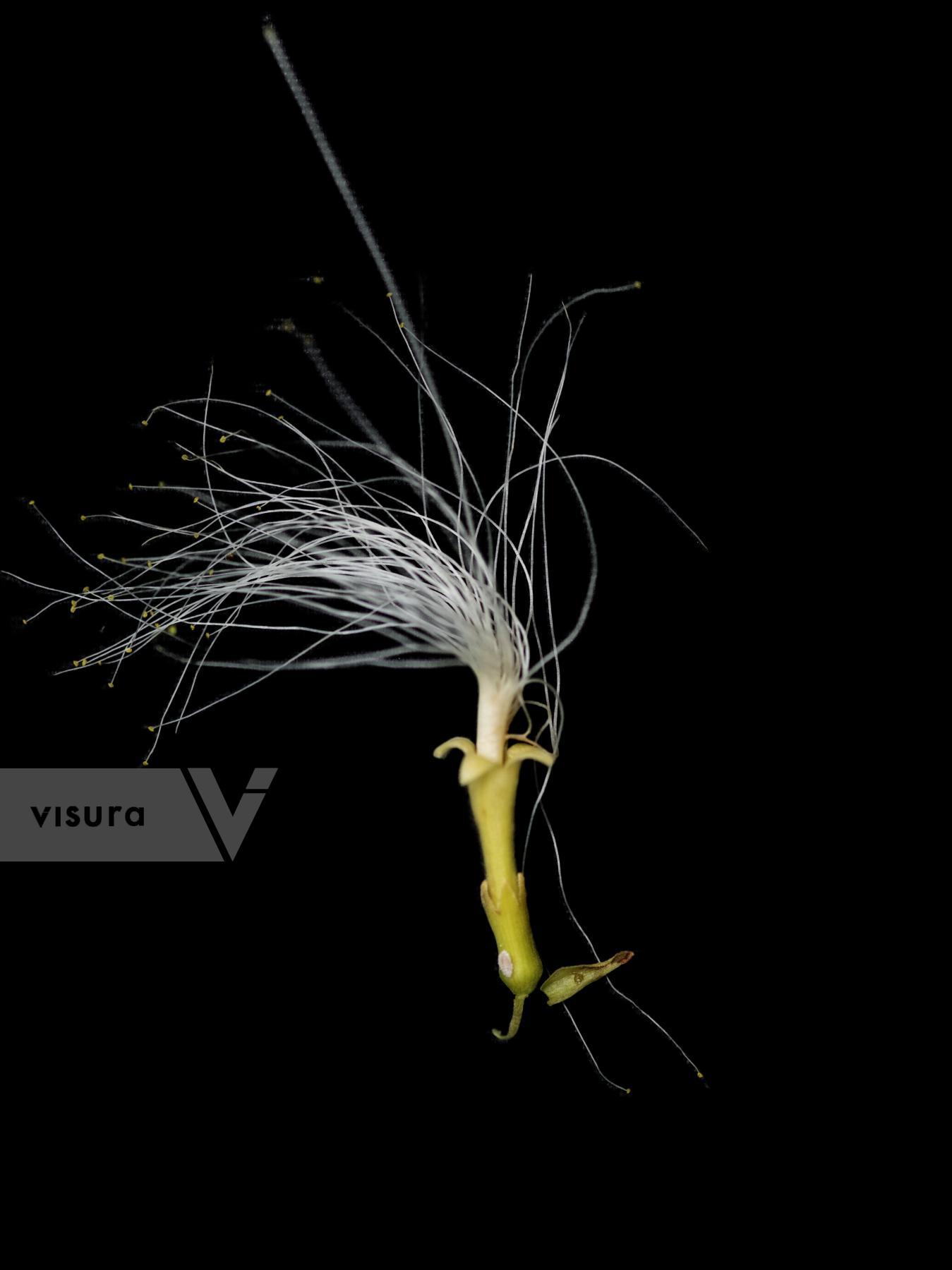
A Still life images of the Inga (Inga Vera) flower. The Inga tree has the capability of restore the soil fertility after the rainforest burning. Acará Brazil
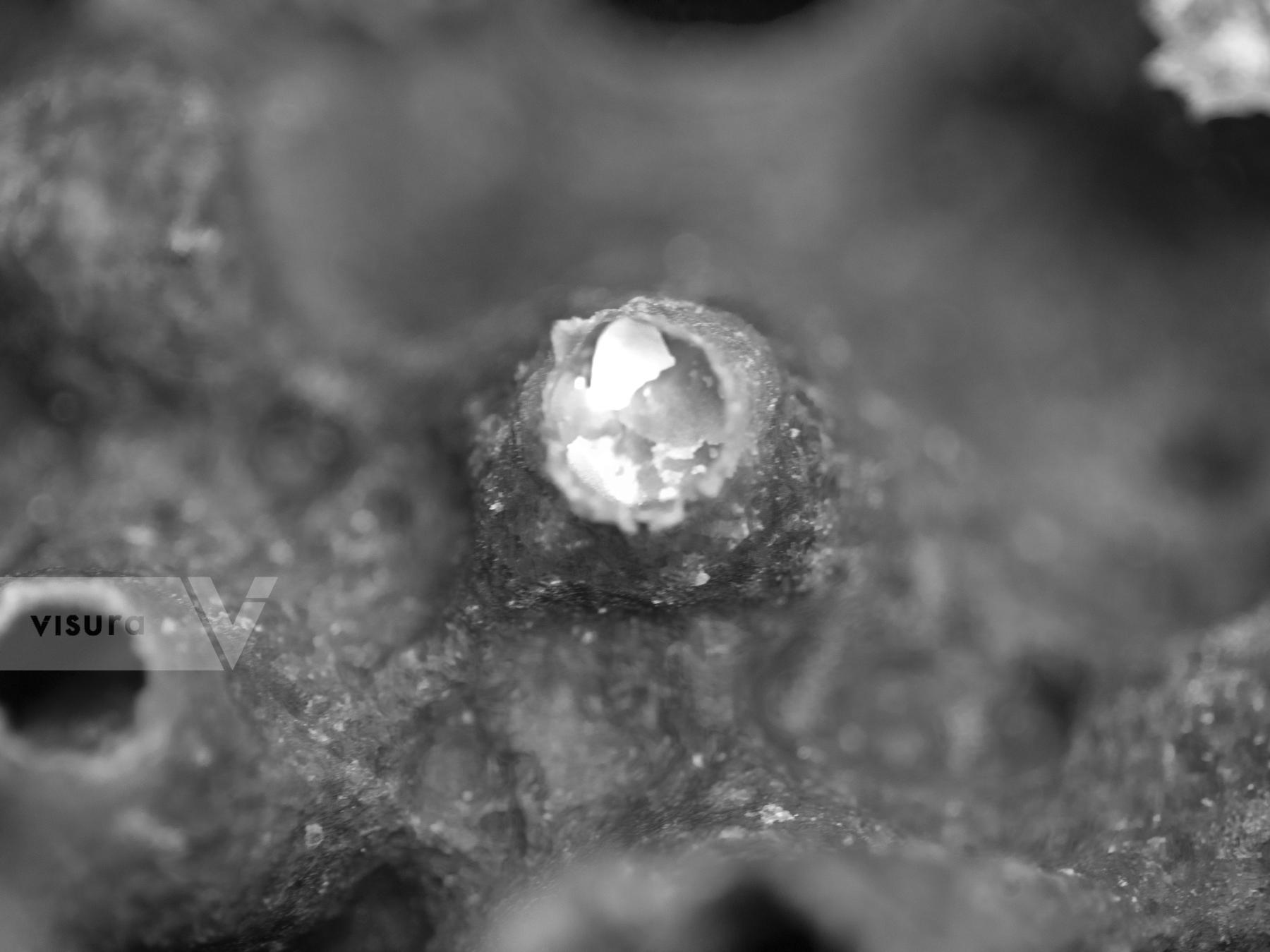
A macro image of the hive of a colony of stingless bees. In this image it is possible to see the pollen collected by the Uruçu-cinzenta (Melipona fasciculata). Acará Brazil

A Still life images of the açaí (Euterpe oleracea) fruit. The açaí soup is a typical dish of the Amazon riverside region, it is usually consumed with fried fish and manioca flower. Most of the açaí collected near Belem is consumed locally. Brazil
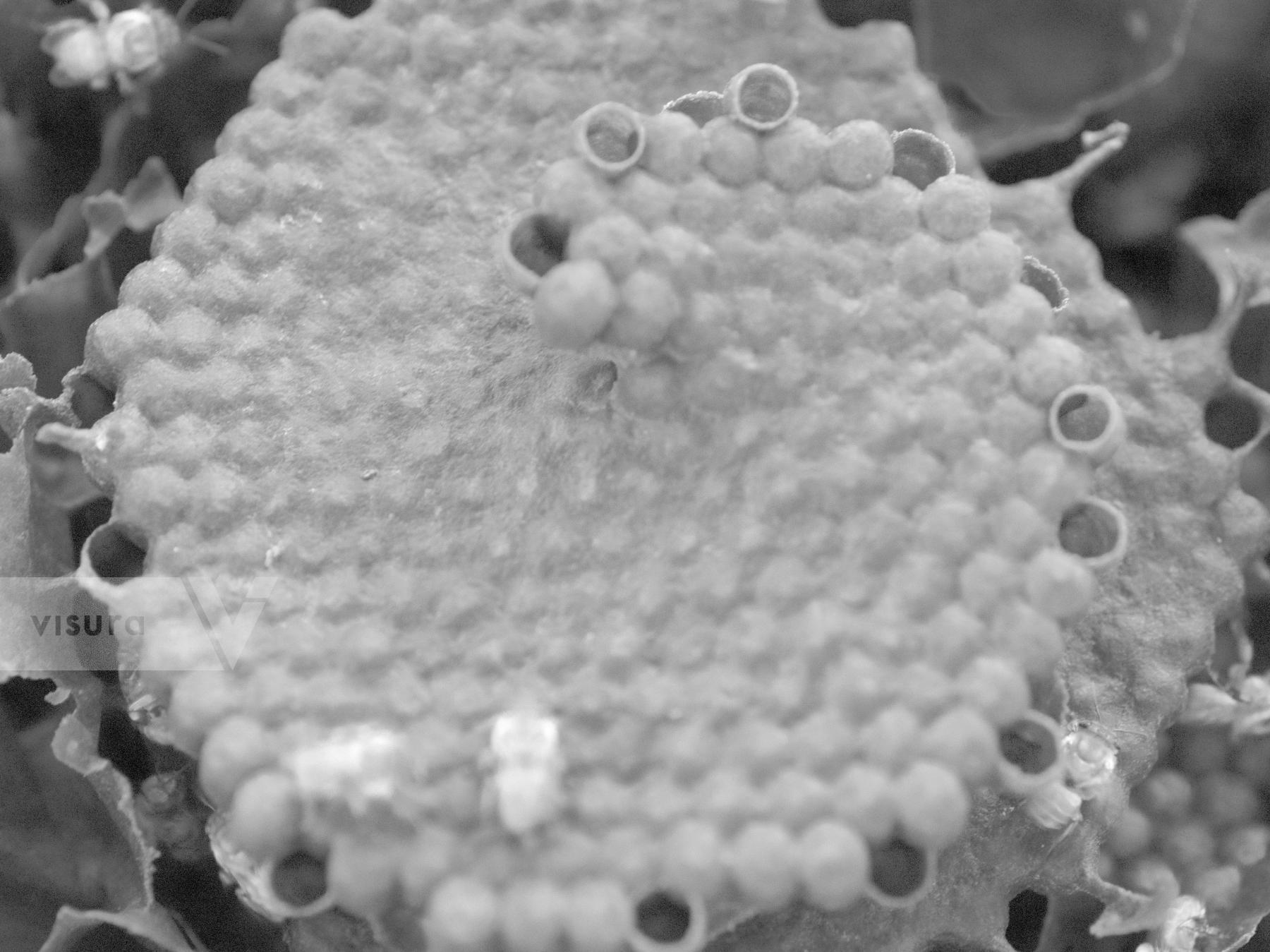
A macro image of the hive of a colony of stingless bees. in this image the specie is the Uruçu-Amarela (Melipona paraensis). Acará Brazil

A Still life images of the Cupuaçu (Theobroma grandiflorum) flower. Acará Brazil
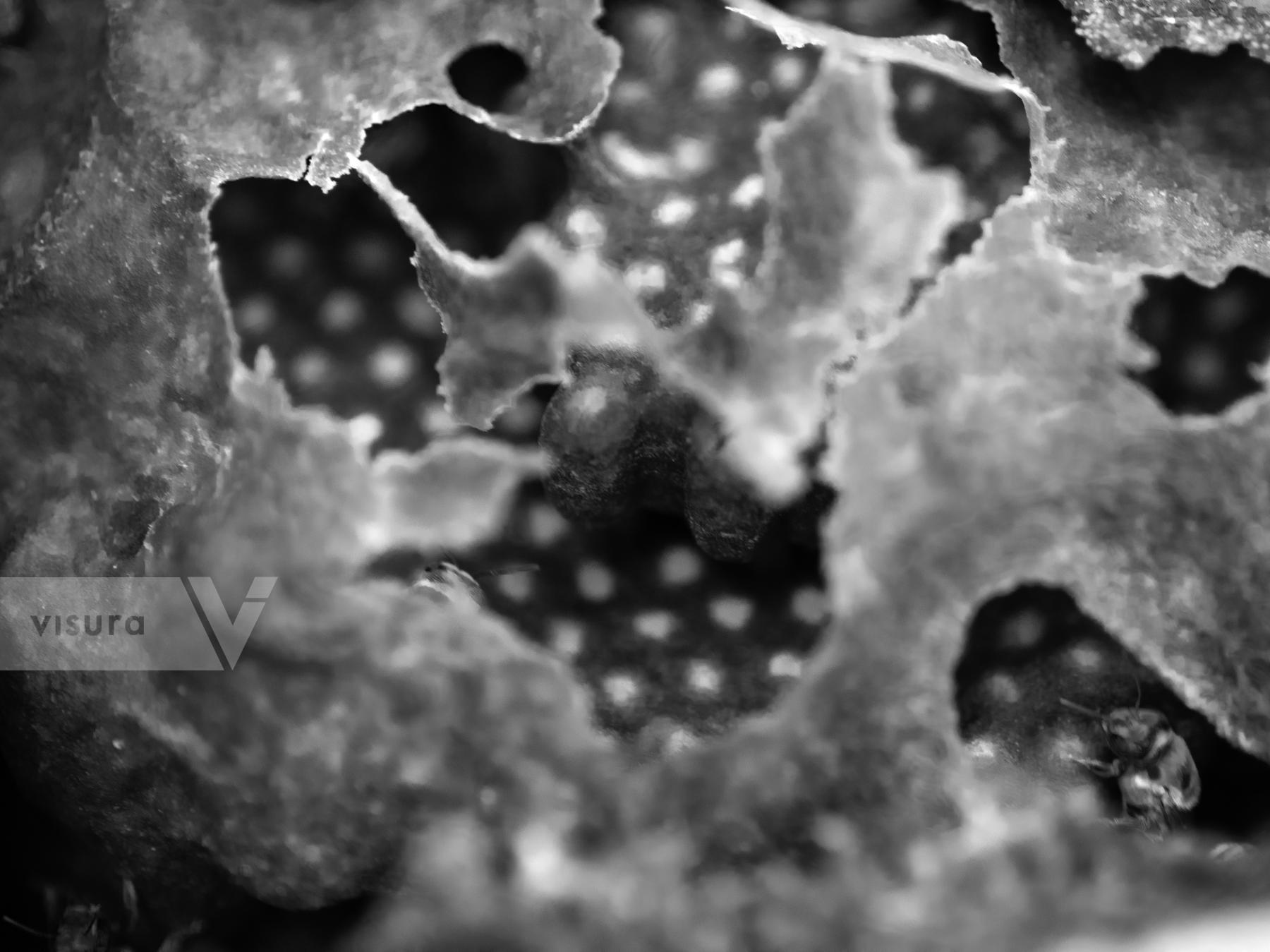
A macro image of the hive of a colony of stingless bees. In this image it is possible to see the newborn cases of the Uruçu-cinzenta (Melipona fasciculata). Acará Brazil

A Still life images of the Banana (Musa acuminata) flower. The banana tree is not originally from Brazil but was introduced in the 1500. Today is part of the local diet and culinary tradition. Acará Brazil

A macro image of the hive of a colony of stingless bees. in this image the specie is the Uruçu-Amarela (Melipona paraensis). Acará Brazil

A Still life images of the Urucu (Bixa Orellana) flower. The indigenous people use the fruit for culinary, and painting. Acará Brazil

An image of a Uruço-cinzenta (Melipona fasciculata). Acará Brazil
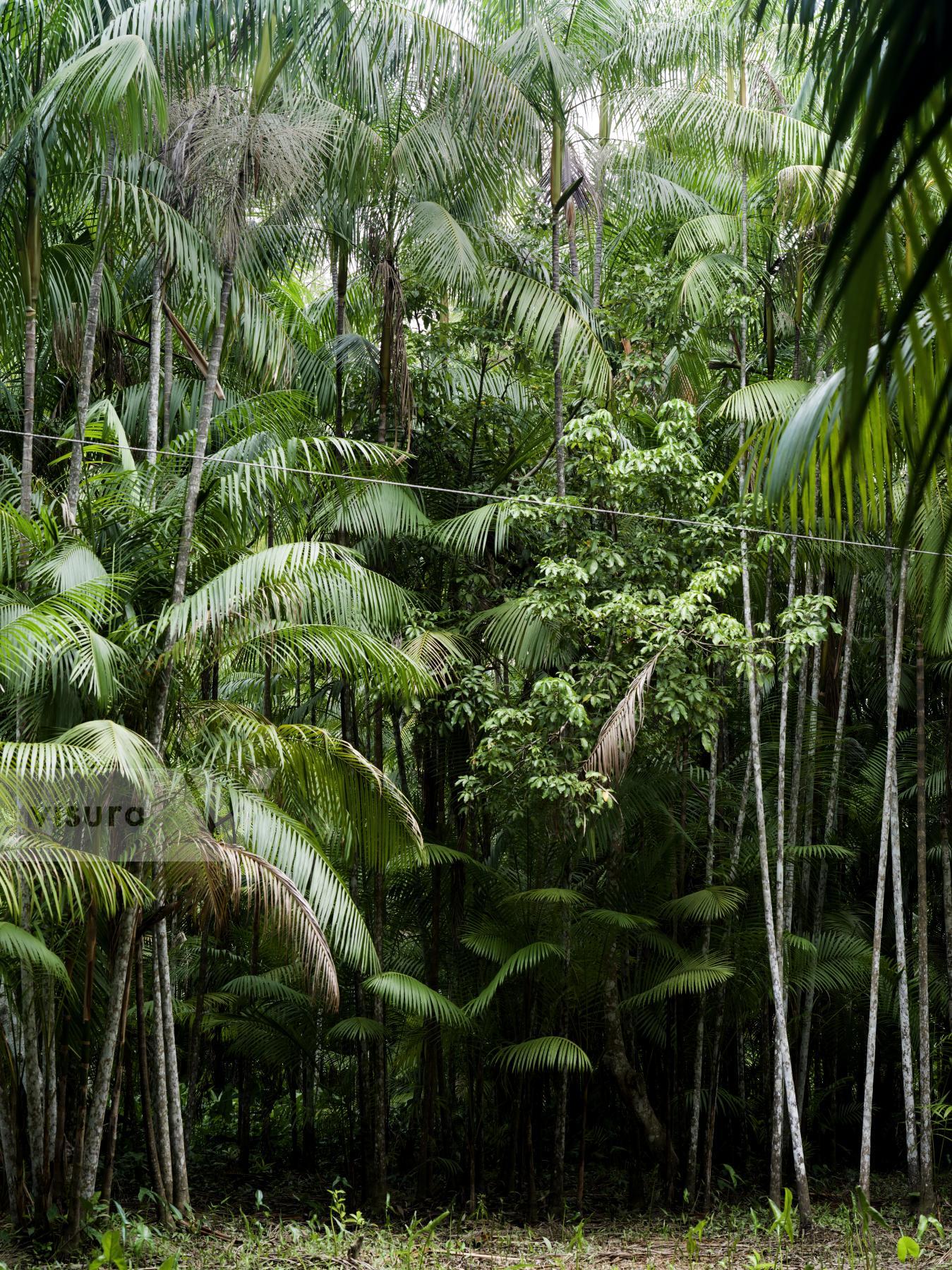
Boa Vista do Acará, Brazil. A view of the Amazon Rainforest near the Guamá River., where the Community breeding stingless bees live. Acará Brazil
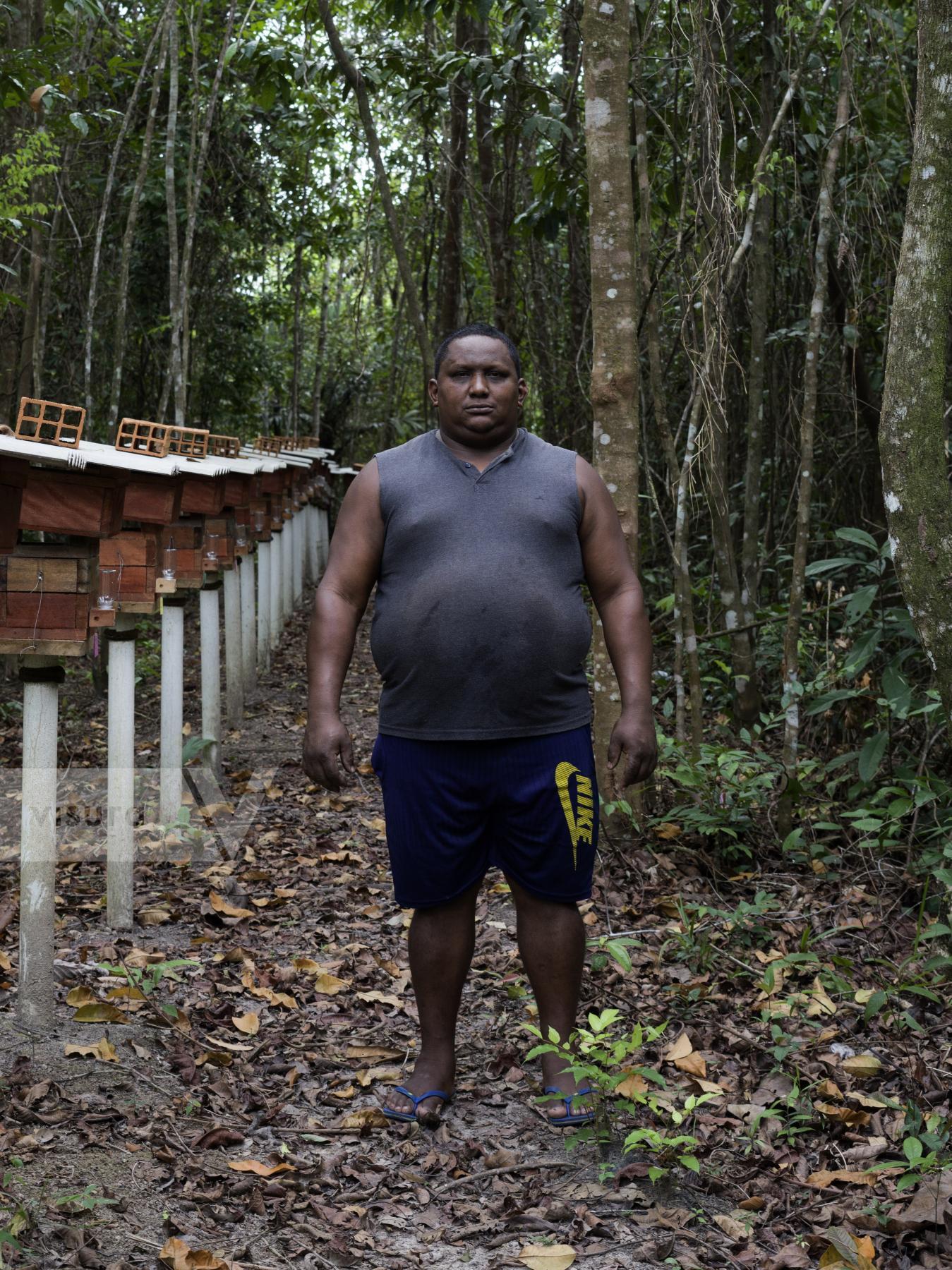
A portrait of a meliponiculturist of the community of Boa Vista do Acará. The members of the Community are small farmers with lower income, the honey production is a side income respect the main activities. The stingless bee’s hives request a low management and maintenance and the bees are easy to handle since they don’t sting. The native Brazilian stingless bees are fundamental for maintenance of the ecosystem; especially today, that with climate change and deforestation the Amazon Forest is at risk the stingless bees act as protector of the forest allowing new trees to grow and replace the ones that disappeared because of the human hand. The bees colonies aren’t captured from the wild but are multiply from a Melliponiculture breeding site managed by the NGO. Acará Brazil
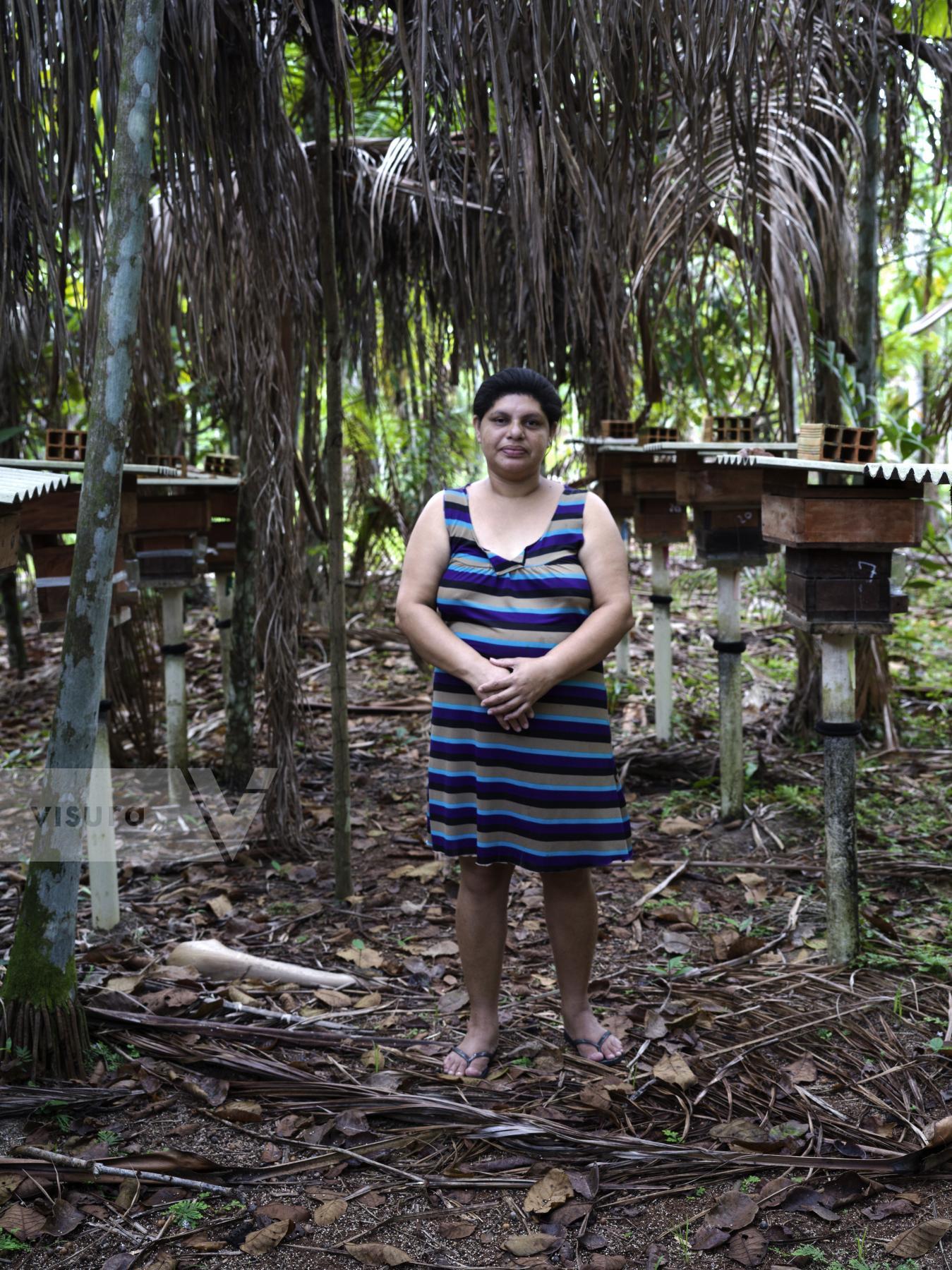
A portrait of a meliponiculturist of the community of Boa Vista do Acará. The members of the Community are small farmers with lower income, the honey production is a side income respect the main activities. The stingless bee’s hives request a low management and maintenance and the bees are easy to handle since they don’t sting. The native Brazilian stingless bees are fundamental for maintenance of the ecosystem; especially today, that with climate change and deforestation the Amazon Forest is at risk the stingless bees act as protector of the forest allowing new trees to grow and replace the ones that disappeared because of the human hand. The bees colonies aren’t captured from the wild but are multiply from a Melliponiculture breeding site managed by the NGO. Acará Brazil
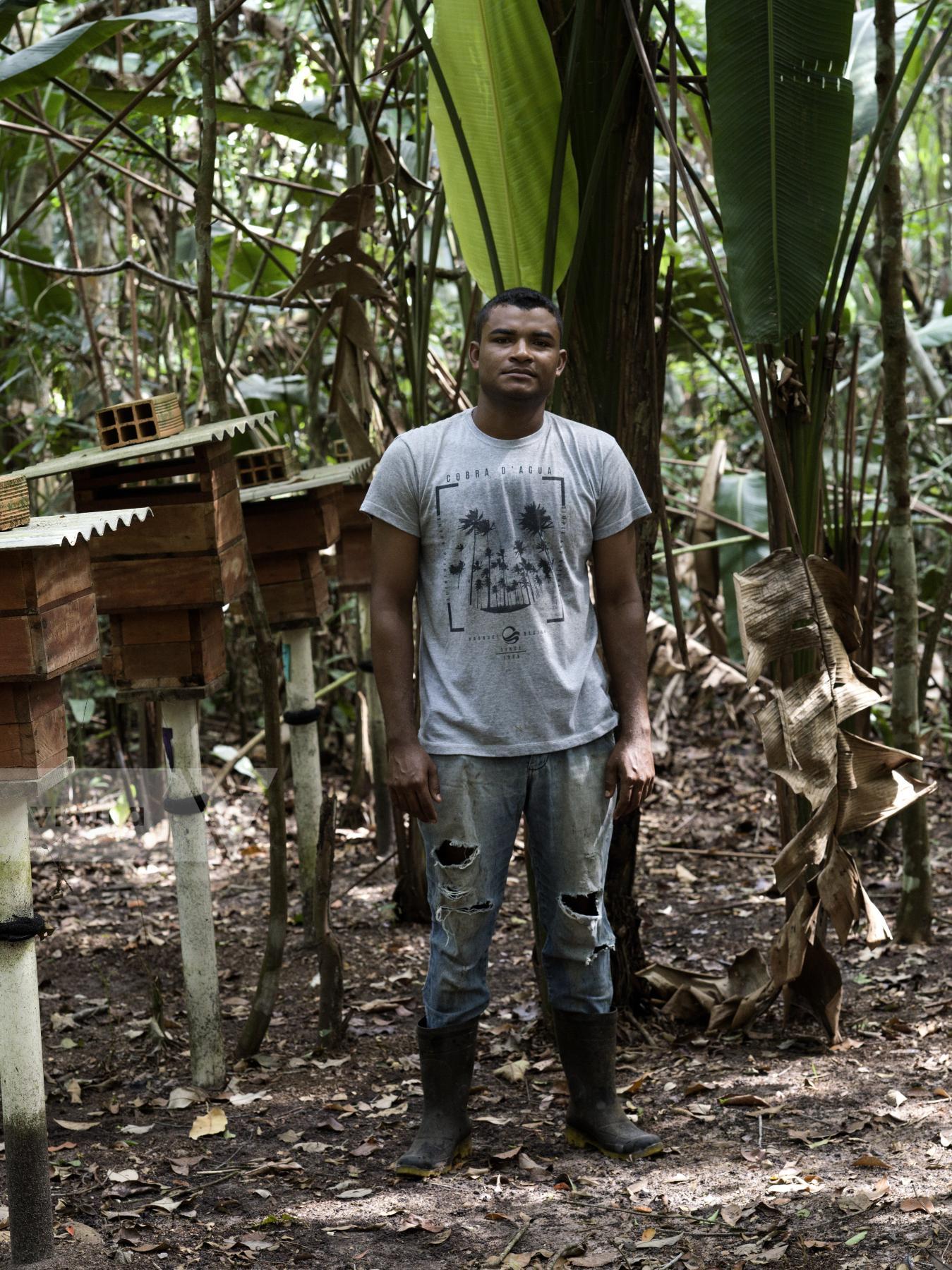
A portrait of a meliponiculturist of the community of Boa Vista do Acará. The members of the Community are small farmers with lower income, the honey production is a side income respect the main activities. The stingless bee’s hives request a low management and maintenance and the bees are easy to handle since they don’t sting. The native Brazilian stingless bees are fundamental for maintenance of the ecosystem; especially today, that with climate change and deforestation the Amazon Forest is at risk the stingless bees act as protector of the forest allowing new trees to grow and replace the ones that disappeared because of the human hand. The bees colonies aren’t captured from the wild but are multiply from a Melliponiculture breeding site managed by the NGO. Acará Brazil
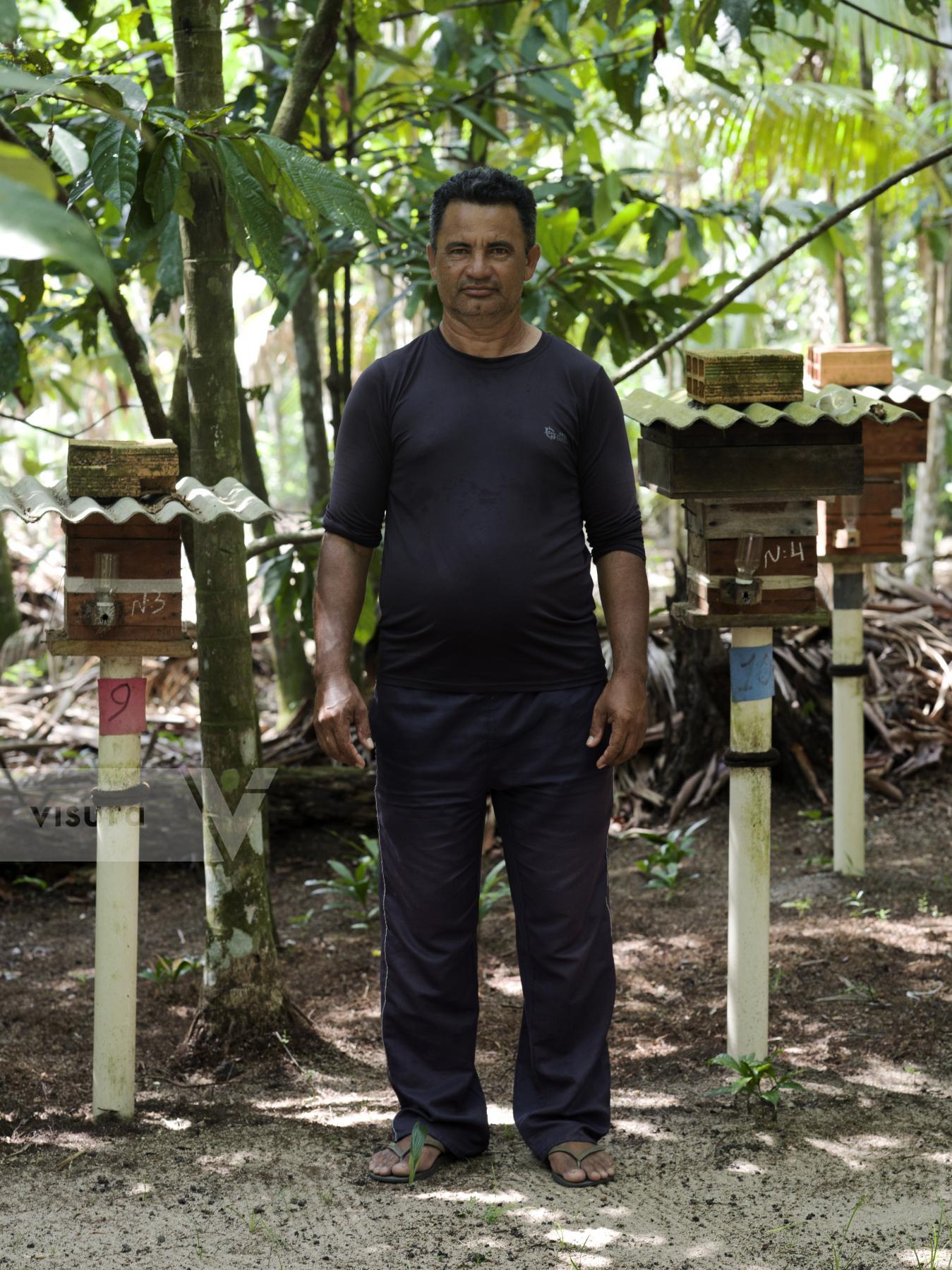
A portrait of a meliponiculturist of the community of Boa Vista do Acará. The members of the Community are small farmers with lower income, the honey production is a side income respect the main activities. The stingless bee’s hives request a low management and maintenance and the bees are easy to handle since they don’t sting. The native Brazilian stingless bees are fundamental for maintenance of the ecosystem; especially today, that with climate change and deforestation the Amazon Forest is at risk the stingless bees act as protector of the forest allowing new trees to grow and replace the ones that disappeared because of the human hand. The bees colonies aren’t captured from the wild but are multiply from a Melliponiculture breeding site managed by the NGO. Acará Brazil
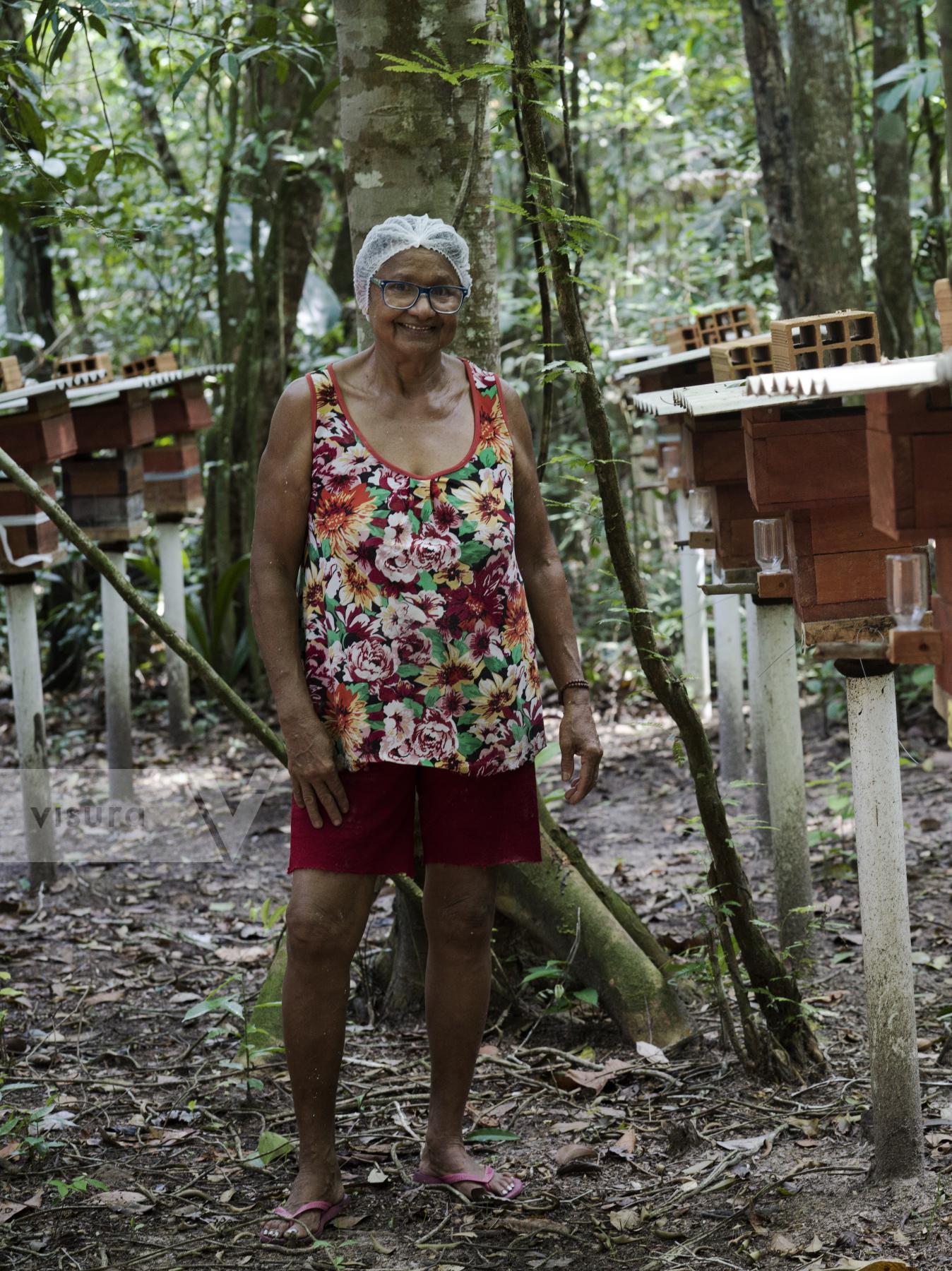
A portrait of a meliponiculturist of the community of Boa Vista do Acará. The members of the Community are small farmers with lower income, the honey production is a side income respect the main activities. The stingless bee’s hives request a low management and maintenance and the bees are easy to handle since they don’t sting. The native Brazilian stingless bees are fundamental for maintenance of the ecosystem; especially today, that with climate change and deforestation the Amazon Forest is at risk the stingless bees act as protector of the forest allowing new trees to grow and replace the ones that disappeared because of the human hand. The bees colonies aren’t captured from the wild but are multiply from a Melliponiculture breeding site managed by the NGO. Acará Brazil

A portrait of a meliponiculturist of the community of Boa Vista do Acará. The members of the Community are small farmers with lower income, the honey production is a side income respect the main activities. The stingless bee’s hives request a low management and maintenance and the bees are easy to handle since they don’t sting. The native Brazilian stingless bees are fundamental for maintenance of the ecosystem; especially today, that with climate change and deforestation the Amazon Forest is at risk the stingless bees act as protector of the forest allowing new trees to grow and replace the ones that disappeared because of the human hand. The bees colonies aren’t captured from the wild but are multiply from a Melliponiculture breeding site managed by the NGO. Acará Brazil
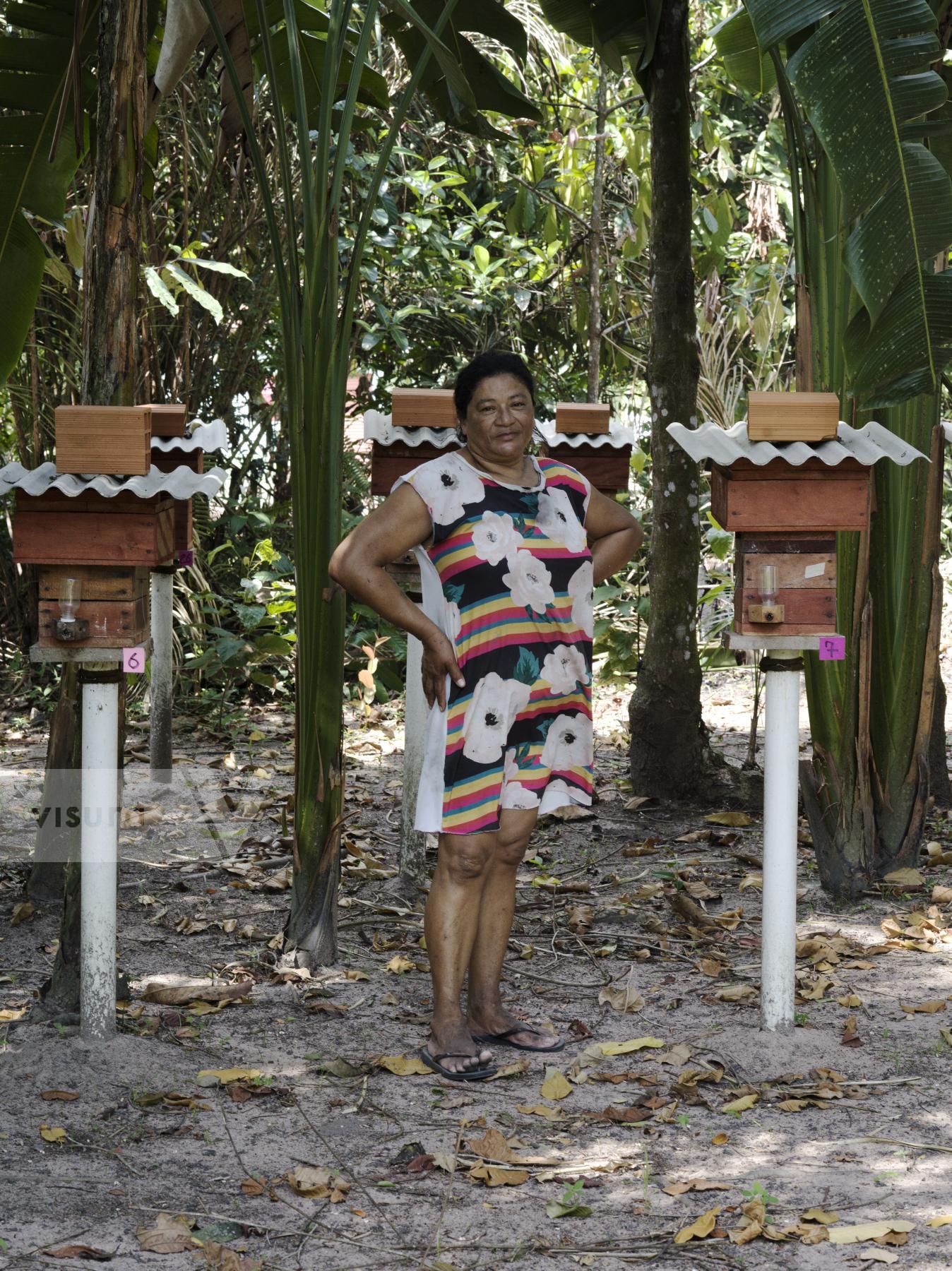
A portrait of a meliponiculturist of the community of Boa Vista do Acará. The members of the Community are small farmers with lower income, the honey production is a side income respect the main activities. The stingless bee’s hives request a low management and maintenance and the bees are easy to handle since they don’t sting. The native Brazilian stingless bees are fundamental for maintenance of the ecosystem; especially today, that with climate change and deforestation the Amazon Forest is at risk the stingless bees act as protector of the forest allowing new trees to grow and replace the ones that disappeared because of the human hand. The bees colonies aren’t captured from the wild but are multiply from a Melliponiculture breeding site managed by the NGO. Acará Brazil
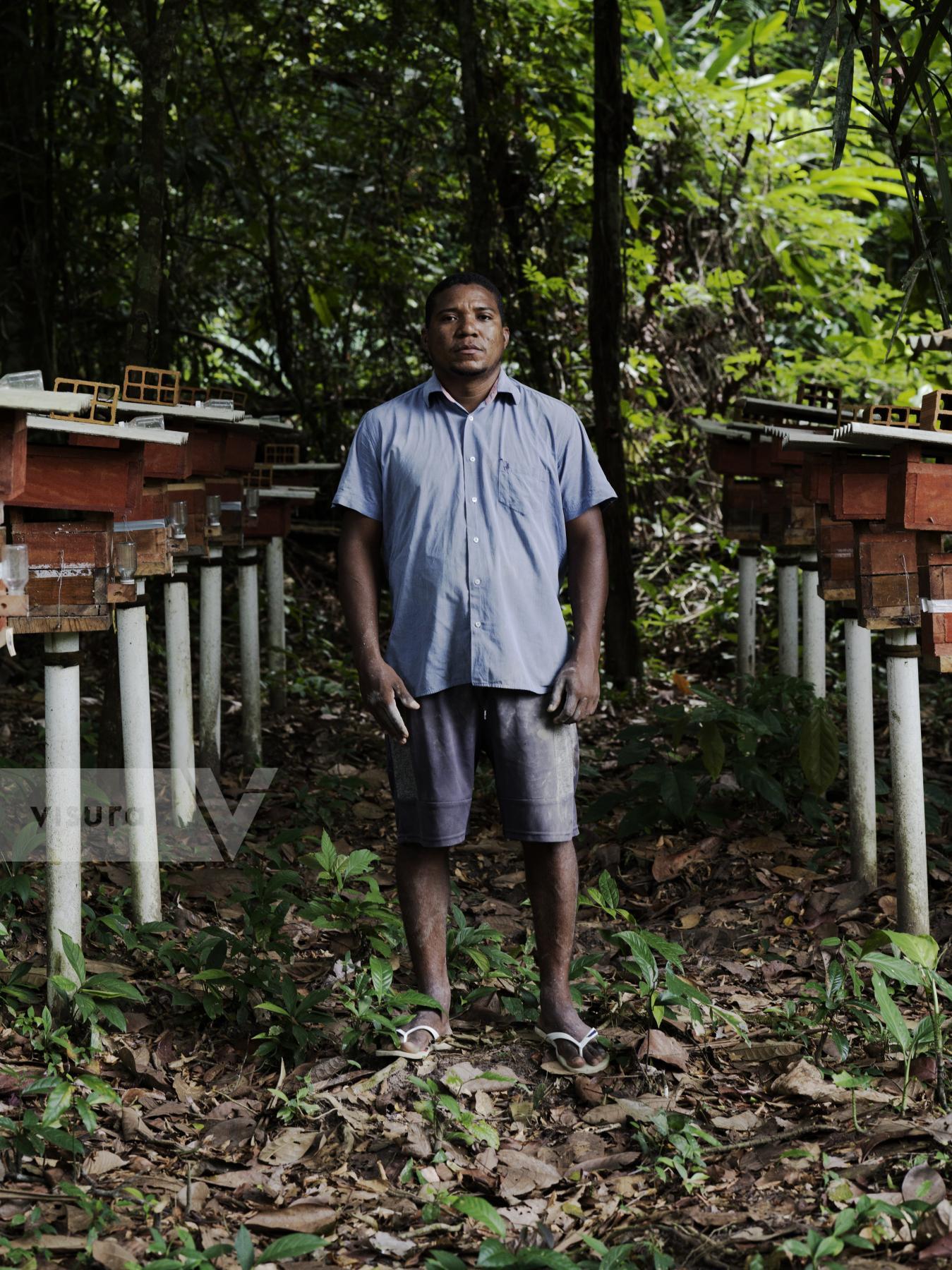
A portrait of a meliponiculturist of the community of Boa Vista do Acará. The members of the Community are small farmers with lower income, the honey production is a side income respect the main activities. The stingless bee’s hives request a low management and maintenance and the bees are easy to handle since they don’t sting. The native Brazilian stingless bees are fundamental for maintenance of the ecosystem; especially today, that with climate change and deforestation the Amazon Forest is at risk the stingless bees act as protector of the forest allowing new trees to grow and replace the ones that disappeared because of the human hand. The bees colonies aren’t captured from the wild but are multiply from a Melliponiculture breeding site managed by the NGO. Acará Brazil
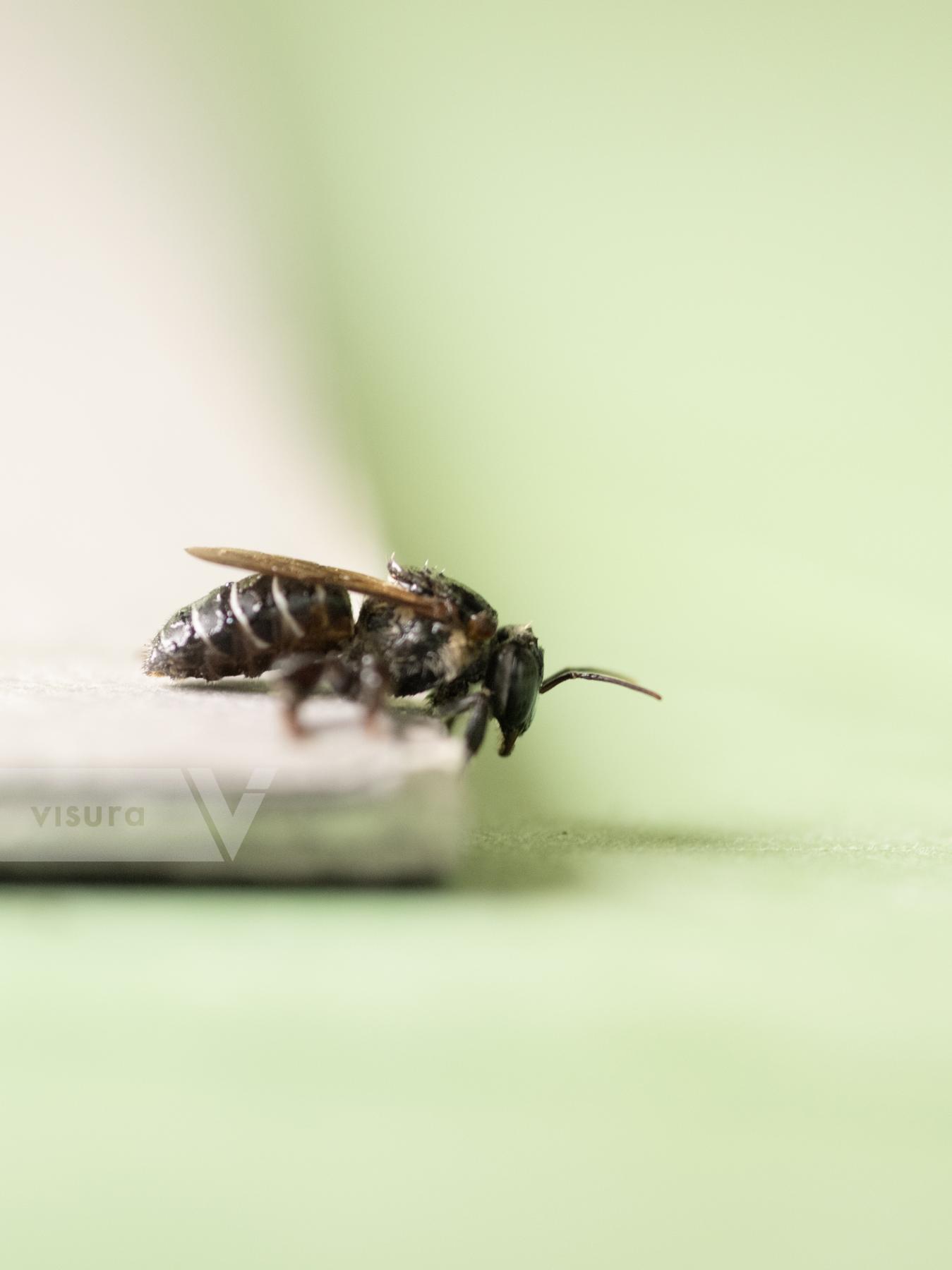
An image of an Uruçu-cinzenta ( Melipona Fascicolata), the stingless bees that is breeded in the area by the farmers. Acará Brazil












